
 History of the Chinese Republican Navy, recreated in Taiwan in 1947
History of the Chinese Republican Navy, recreated in Taiwan in 1947
The ROCN, or Republic of China Navy is facing today its equivalent the PLAN (PRC Navy), well under scrutiny today as invasion by default of another form of appropriation was publicly announced recently with a schedule some specialists points to 2027. The ROCN was naval branch created in 1949 with the new state of Taiwan (formely Formosa), appeared towards the end of the civil war between Mao’s communists and Chang Kai Shek’s Kuomintang, which government took refuge in Taiwan.
In this article, we will see the very origin of both the post-revolutionary Navy in 1911, origins and occupation of Formosa, the WW2 navy and civil war split, ships attributed by the allies to the KMT and PRC in 1948-49, actions and losses, and the fundation of the new ROCN or Republic of China Navy. The development of the fleet until today, difficult relations with the US, gradual sourcing outside the US and development of a local industry, current and future plans, organization and composition (including the Taiwanese Marines and Naval Air force). According to wdmmw.org, the navy counts today 91 ships with a Global Rank of 12/34, to compare with the PLAN, 417 ships and 2/34 (world’s second rank).
#coldwar #taiwan #rocn #republicofchinanavy #taiwannavy
Introduction: China in Turmoil:
China was a great (periodically) maritime nation, introducing many innovative techniques, not least was the axial rudder, underwater compartimentation or the compass, to cite a few. Admiral Zheng He expedition in the 15th century probably reached China and featured the greatest fleet, with the largest ships ever seen in any ocean at that time. It was a peaceful “show the flag” expedition to create new trade links, later favorizing a Chinese lerchant “diaspora” to spread in Asia and the Indian Ocean.
However later Emperors focused on the threat on land, for good reasons, notably facing the Mongol invasion. Fast forward and the XIXth Century became the “century of humiliation” to this day resented by the actual PLAN or continental (communist) Navy. At the time of the revolt of the Boxers in 1900 it appeared clearly that the various provincial Chinese Navies were not ready to support each others and training and organization was lacking. The 1894 Sino-Japanese war followed by the great international expedition of 1900 made it all clear.
Imperial credibility to ensure the defence of the country, between court intrigues and corruption, and the start ofan industrial revolution in China generated new enlightened elites which aspired to a new form of nationalism, requiring a change of regime. The Chinese revolution started with multiple insurrections from 1907-1908 leading to a long period of troubles until the December 1911 proclamation of the Republic, under its first president Dr. Sun Yat-sen.
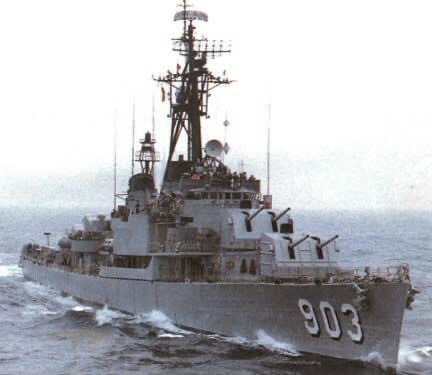
ROCS Hua Yang (cc) in the 1980s. She was part of the largest serie of destroyers of the Sumner class ever delivered to an allied nation of the US, some fifteen, between 1971 and 1983. They were modernized in several phases and all received SSMs and SAMs in the 1980s, kept active until 1999-2004.
This was followed by the warlord era and the rise of the communist influence and the appeites of the Empire of Japan, which after Korea, had views on the resources-rich Northern provinces of China perfect to fuel its own industrial revolution. In 1931, many incidents, the invasion of Mandchuria was followed by the January 28 “incident” of Shanghai, starting point of a full scale invasion of 1937 that some historians associated with the start of the second world war.
WW2 was won with the help of the allies, supporting mostly southern Nationalist Forces but also communist forces in the north, under Mao. In 1937 the relatively large Chinese Navy was lost in combat or scuttling during the invasion, and subsequent operations became purely a land war.
For 12 years, Chinese Nationalists in the south and Communists in the North-east opposed the same enemy, Japan as occupying power, and despite their ideological opposition it seems to the allies, both movements could have been the start of a new China, independent from international pressions, especially as hoped by the white house, from USSR. Some also hoped the Chinese nationalist faction of Chiang Kai Tchek could win over the communists and in 1946, a reorientation of support when the civil war was raging, sealed the fate of China.
The Nationalist Navy was reconstituted with a few gunboats transferred by the allies before 1942, and they became the very original of the ROCN and future “Taiwanese Navy”.
Read More about the Chinese Navy
Taiwan (ex-Formosa)
A long story of Piracy
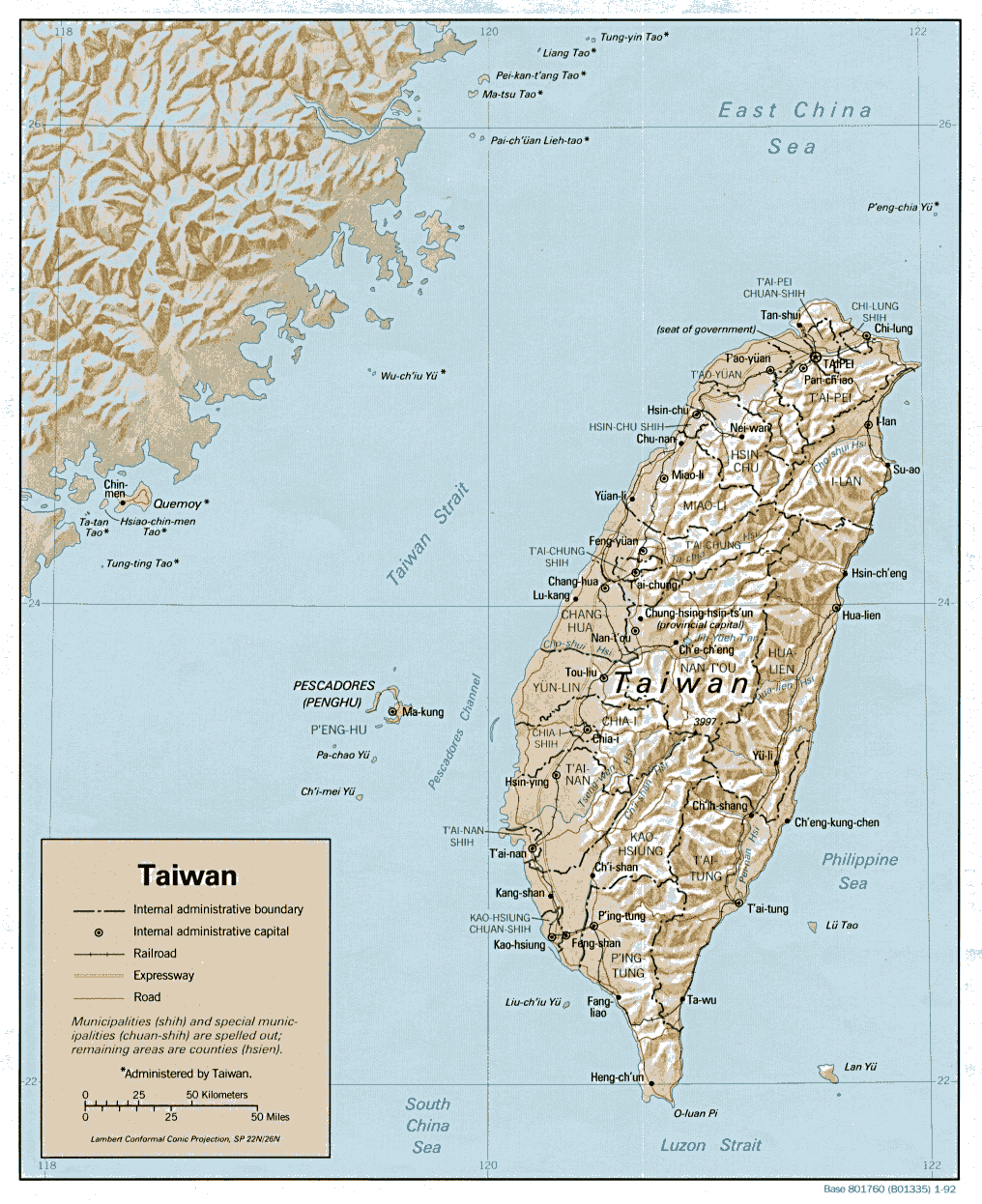
The island of Formosa, where Chinese Nationalists and the Kuomintang took refuge in 1948, known as such in Western literature had long being a feral “part of” China, inhabited by indigenous tribes, and later a hotspot of piracy during the Ming era. The Island was a danger for all vessels transiting into the strait, and several small scale expeditions or coastal bombardments had been done, notably by the Royal Navy, that is until the punitive Taiwan Expedition of 1867, by the United States against the Paiwan tribe. This was an early Marine landing supported by USS Hartford that was initially successful, until the tribe turned into a guerilla warfare that eventually led to a retirement. This was considered a failure and piracy resumed soon.
The Mudan Incident of 1871, saw Ryūkyūan sailors beheaded, answered by a Japanese Expedition of 1874 and this time, the Japanese Marines engaged Paiwan warriors in battle and defeated them for good. They even received compensation from the Qing government. Today the indigenous Paiwan only represent 2% of a population which is ethnically Chinese. The history of this island was not always of isolation: It was (partially) occupied by the Dutch in 1624–1662 (and the VOC encouraged Chinese migration to Taiwan), the Spanish in 1626–1642. Thousands of Chinese crossed the strait and became rice and sugar planters already in the XVIIth century. In fact the Chinese eventually were far more numerous than their Dutch overlords and Chinese rebellions reupted over taxation issues. “Taioan” became the Kingdom of Tungning in 1662–1683 under the Ming dynasty loyalist Zheng Chenggong (“Koxinga”).
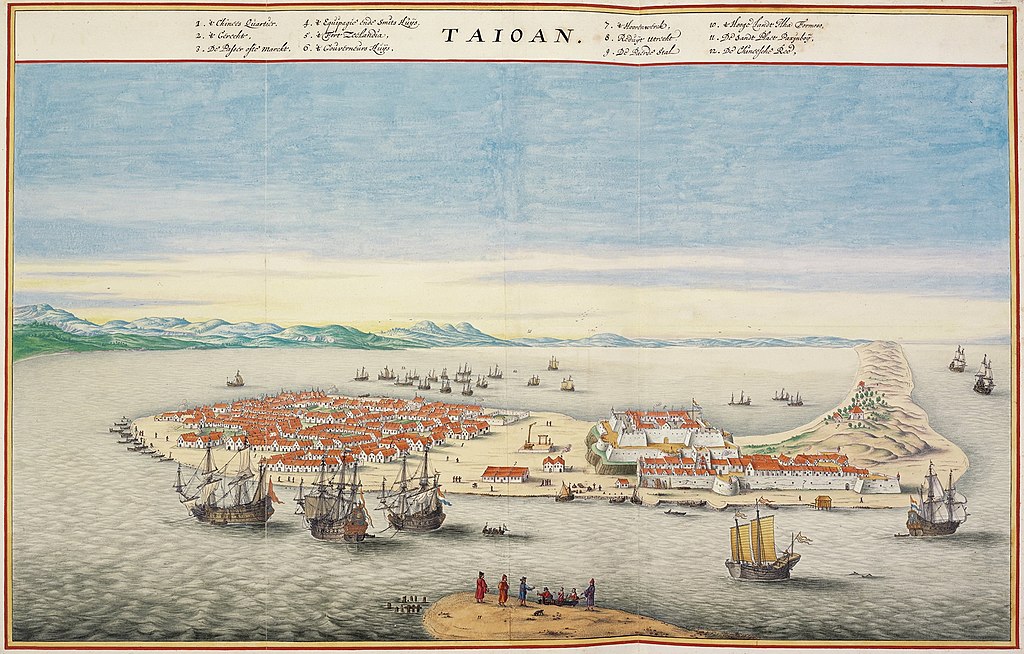
After he passed out, the island fell mostly under Qing rule between 1683 and 1895. These two centuries very much are the bedrock of continental China revendications about the island to this day. What followed were the Zheng Jing retreat to Taiwan, Revolt of the Three Feudatories (1670-73), gradual Sinicization, Qing invasion and Battle of Penghu in 1682, the Qing Annexation, Administrative expansion of 1796-1874, further Expansions after crisis in 1875-1895 and after the Japanese expedition, but by 1895 during the very short “Republic of Formosa” 2.5 million Chinese settlers lived here on the west coast, leaving the mountainous areas largely autonomous, and under the control of aborigines. Taiwan had a role during the Opium war and during the Sino-French War, the French invaded Taiwan in turn (Keelung Campaign, 1888).
Japanese Rule (1895-1945)
The Battle of Yalu and Japanese Victory, led the latter to occupy the island in 1895. Indeed, as part of the peace settlement, the Qing empire ceded Taiwan and Penghu to Japan on April 17, 1895 (Treaty of Shimonoseki) and this loss became later a rallying point for Chinese nationalist movements, fuelling the early 1900s uprisings leading to the 1911 revolution.
The acquisition of Taiwan by Japan under PM Itō Hirobumi’s “southern strategy” saw Kabayama Sukenori becoming the first Japanese governor-general of Taiwan. This Japanese rule was divided into three periods, cammed the military suppression 1895–1915, dōka or “assimilation” in 1915–37, and kōminka or Japanization (1937–45) and a “special treatment” for aborigines. Assimilation policies were not welcome and led to Armed Resistance, partisan attacks continued from 1895 until 1902, followed by more Japanese troops landed and a “pacification”. Later, a non-violent cultural movement was born in 1921. During the second phase, the country was gradually industrialized and developed, its population reaching new heights. However against aborigines, repression was sometimes fierce.
Taiwan in WW2
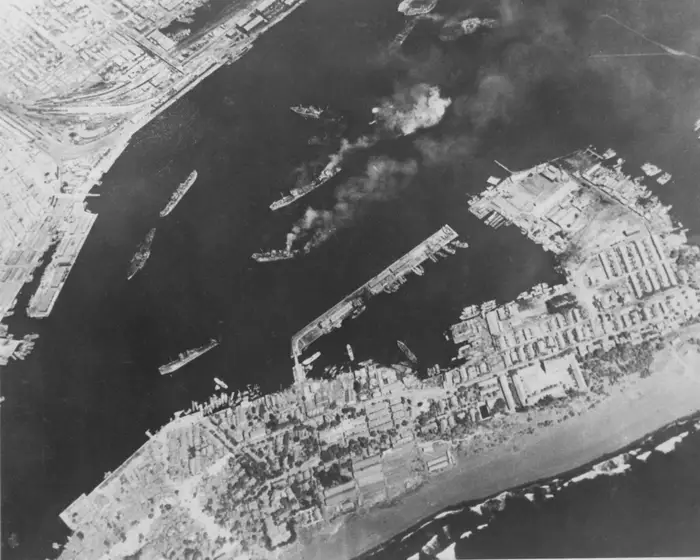
The war with China in 1937 saw Taiwan becoming the “first Japanese aircraft carrier” for this war, and its industrial capacity turned to war production. In 1939, it had exceeded agricultural production and the existing harbours were developed to serve as primary operation bases for the Imperial Japanese Navy. The “South Strike Group” HQ was in Taihoku Imperial University (now National Taiwan University) and the island was the main base for for the invasion of Guangdong in late 1938, and later the occupation of Hainan in February 1939.
The main south China HQ, with a large planning and logistical center was established in Taiwan and rose in importance even after Pearl Harbor, on 7 December 1941. This became the main base for Japanese naval and air attacks on Luzon (Philippines Campaign, May 1942) and the invasion later of Myanmar. From 1943, traffic off Taiwan suffered much of the presence of US Submarines, so much so that the local Japanese administration prepared to be cut off. Taiwan’s industries and assets were regularly bombed by the USAAF in 1944 and in 1945, the USN, with increasing intensity, leaving about 16,000-30,000 casualities. A plan was ever drafted to invade the Island, but fortunately never implemented. Its government prepared for an expected invasion that never came. Instead Okinawa became the main focus, and the Japanese surrender was learned in August.
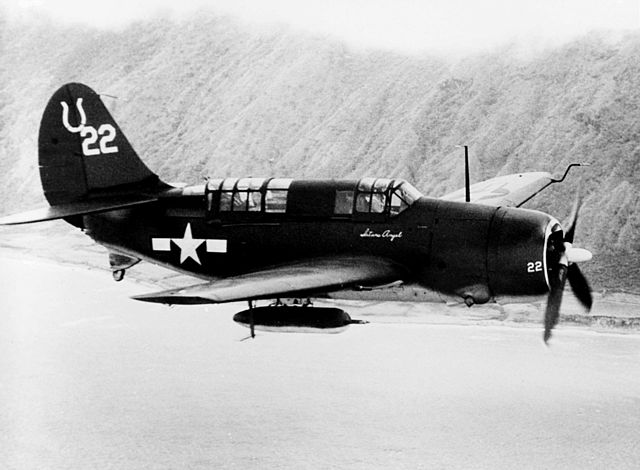
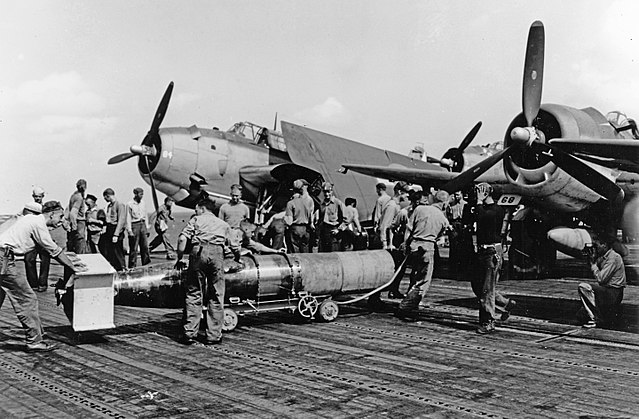
Helldiver and Avenger during the Air Battle of Formosa, 12-16 October 1944.
Return to China (1945)
In 1942, the Chinese KMT government renounced all treaties signed with Japan so plegding a return of Taiwan to China with Manchuria as main objectives. The Cairo Declaration of 1943 confrmed this to Chiang Kai Shek as well as the Pescadores. It was never however signed or ratified, but by 1945, Japan unconditionally surrendered and the island was put under the administrative control of the Republic of China, with the support of the UN Relief and Rehabilitation Administration. The Allied Powers basically ordered Japanese forces in China-Taiwan to surrender to Chiang Kai-shek and by 25 October 1945, Rikichi Andō handed over his powers to Chen Yi of Taiwan Investigation Commission, and thus, Taiwan became a province of China but never with a full acceptance by Allied Powers of the ROC unilateral declaration of annexation. This complicated legal origin is what leads to a difficult cold war situation of the island, never formally recoignised, which also emboldened the PRC into revendicating the island.
The start of the Island under ROC’s rule was pretty harsh: Taiwan fell under martial law with events such as the February 28 Incident and White Terror. October 25, 1945 became “Taiwan Retrocession Day” in which Japanese troops surrendered and still 309,000 Japanese lived in Taiwan, with 90% repatriated by force to Japan. The Kuomintang was repressive and corruption led to growing discontent in the population with a first serious incident on 28 February 1947, with tens of thousands killed or arrested. As the Communists gained full control of Mainland China in 1949, two million refugees from the lossing Nationalist faction fled to Taiwan. On October 1, 1949, the P.R.C. was founded while Chiang Kai-shek had settled the ROC capital in Taipei, repatriating the whole Nanjing government there. This retreat wa seen from the get go as a temporary one, prioritizing the military over economic development, which also in part fuelled the discontent.
It’s also the starting point for the ROC Navy. But let’s see first some basic facts about Taiwan:
Taiwan: Geography, Economy and Resources
Taiwan is a 35,808 square kilometres (13,826 sq mi) island lying 180 kilometres (112 mi) across the Taiwan Strait, SW China. It is divided between a rugged mountain range (with peaks such as Yu Shan at 3,952 m (12,966 ft)) running parallel to the east coast, and gently rolling plains of the western third where is most of the population (23 millions today), so just facing continental China. This topography explains its climate, mildly sub-tropical and mountainous, hosting a large varity of endemic wildlife. Trekking in the south-east range is still quite popular and there are many parks and reserves. Agricultural lands on the northwest had to cope with the East Asian Monsoon.
Birth of the Republic of China Navy
In 1895, the island of Taiwan was placed under Japanese rule, with the Imperial Japanese Navy responsible for defending the waters of Taiwan and Penghu. After World War II, on 25 October 1945, the jurisdiction of Taiwan and Penghu was transferred to the Republic of China and the ROCN began its operation in that territory.
Following the relocation of the ROC government to Taiwan, the ROCN was involved in a number of commando attack escorts, evacuation and transport of more displaced soldiers and later to provide patrols and resupply operations to Kinmen and Matsu in the Taiwan Strait and South China Sea offshore islands.
The precursor to the modern ROC Navy created by the Ministry of the Navy, ROC’s Provisional Government in 1911 was managed by Liu Guanxiong, a former Qing dynasty admiral. During the warlored era, the Navy remained loyal to the Kuomintang government of Sun Yat-sen and during the civil war with the Communist Party and after the 1937 Japanese invasion, concentrating mainly on riverine warfare. But it gradually expanded after WWII by the acquisition of Japanese destroyers, escorts and various ships, recovering gunboats or acquiring a large variety of US or in some case british vessels(see the list below). These transfers to the ROC Navy for each type were ofter doubled by another to the PRC as the White House tried to keep relations also with Mao’s communists. The Civil War saw the ROCN protecting supply convoys and involved in ground support, troops transport. Despote of this, the disastrous land campaign saw the complete withdrawal of the ROC Government and a a million refugees to Taiwan in 1949. The bulk of the Navy went with it, and was reorganized entirely known the object of a popular Taiwanese song, “The New Navy”.
The Civil War Chinese Navy (1947-1949)
The official government in 1945, as recoignised by the allies, the Kuomingtang of Generalissimo Chang Kai Shek ruled over Chungking, on the Yangtze. This faction ruled over the south-east half of the country, but did not included the major ports as the northeast and entire coastline was still under Japanese control while the north was in the hands of Mao Tse Tung army based in Yunnan, with partisans and sympathisers all over the country.
Eventually the Japanese pulled over out of inner Mongolia, Mandchuria, Hainan and Formosa in September 1945, and with massive US help, the Kuomintang manage to regain lost territory along the coast. Still, the countryside remained sympathetic to communists, and the fragile truce between the Kuomingtang and Communists in 1936 was now holding by a thread. By 1946 it evaporated, and the Kumomintang now was showing hostility when meeting a group of communist, such as in when they retook the city of Yunnan in March 1947. Nevertheless, thanks to a popular fervor, the Communists retook gradually the upper hand.
In between, by 4 November 1946, Mao and the US signed a treaty of Friendhip, and the latter disengaged gradually their support to the KMT, feeling a civil war erupting. Eventually the land campaign wages by the communists allowed them to retake many cities held by the KMT, until retaking on 1st September the North China China’s People Republic based on all territories held. At last after a serie of major battle they also recaptured the Yangtze and all KMT cities, including Chungking. This was in April 1949, and several navies were watching the events unfolding, with some isolated incidents; In July, the KMT were on the run, eventually taking refuge in Taiwan, agreat evacuation across the strait, as well as other islands under their control. The evacuaction was complete by December this year. Meanwhile the PRC was proclaimed in Peking on the 1st October.
Ships obtained by Taiwan
Since the bulk of the Chinese Navy was sunk in 1937, both Taiwan and the PRC reconstituted their forces with captured Japanese ships mostly, complemented by US help in the case of KMT. This way, albeit defeated on land, the KMT dwarved the Communist Navy (future PLAN) in 1949, which prevented them to Invade Taiwan and finished off the KMT. The main deterrent were the cruiser Chungking and destroyer Tan Yang and Fen Yang (a Kagero and Akituski class vessel).
Cruiser Chung King
poster
The ex-HMS Aurora of the Arethusa class, launched 1936, was sold at first to the KMT, taken to China with a crew of 682 after acquisition on 5 May 1948. While in Shanghai she defected to the PRC on 2 March 1949, renamed Huang Ho, she was claimed sunk by the KMT off Taku by an air attack. She was refloated after the civil war and repaired by the PRC, recommissioned in late 1951 and renamed again Pei Ching. However, inoperable and was laid up in 1954, used in several roles and eventually BU in the 1960s.
At the origin, sold on 19 May 1948 to the Chinese Navy as compensation for six Chinese custom patrol ships and one cargo seized in Hong Kong and lost, renamed after the capital Chongqing she became the flagship of the Republic of China Navy. During the winter 1948-1949, ROCS Chungking provided gunnery support to the nationalists off Tashan. However she would defect to the communists while in Shanghai (see later).
KMT Destroyers
Ex-Japanese:
-Shen Yang Minekaze class, ex-Namikaze (BU 1960s)
-Tan Yang Kagero class ex-Yukikaze (BU 1971)
-Fen Yang Akitsuki class ex-Yoitsuki (BU 1963)
-Heng Yang & Hui Yang Matsu class, ex-Kaede, Sugi (Bu 1960s)
-Hsin Yang, Hua Yang Tachibana class, ex-Hatsuyume and Tsuta (BU 1960s)
Tai Kang and Tai Ping: US GMT type, BU 1972 for the 1st, the second was sunk on 14 November 1954.
Ex-US:
Tai Chao class frigates: Tao Chao, Tao Ho, Tai Hu, Tai Tsang were ex USN “long hull” DET type destroyer escorts handed over by the USN in December 1948, refuged in Taiwan, stricken 1972-75.
KMT Frigates and Escorts
Fu Po was a Flower class corvette used by the KMT, ex- HMS Petunia. She sank due to a collision with a merchant vessel in the strait on 19 march 1947.
Lin Fu ex HMS Mandip, Hunt I class. Acquired 1948 but took refuge in Hong Kong, transferred to Taiwan, but returned to RN in 1949.
Taiwan obtained many ex-Japanese escorts as well:
Lin An (Erotofu class)
Wai Tai (later Hsueh Feng) of the Mikura or Type B escort, rearmed 1954 with two 120mm, 2x40mm, then renamed Cheng An, stricken 1963.
-The Type C or Kaibokan class Hsin An, Chao An, Jui An, Liao Hai (BU 1960s). The first was rearmed with 2x 76mm, 6x25mm AA, wrecked in September 1954 on the Pescadores. Chao An was modernized the same, sstricken 1963. Jui An received 2x 120mm guns, one 76mm and eight MGs. Liao Hai was assigned to the army. Hulked she was renamed Tsing Ai.
-The Type D Cheng An, Tai An and Tung An, were also stricken in 1963. Rearmed all with two 120mm, 11x 20mm Oerlikon, 2MG. They served as gunboats.
KMT Gunboats
-Hi Hsien (ex-IJN Atada, ex-Yat Sen, 1930, 1520t), stricken 1960s
-Chu Kuan of the Chu class (1907, 740 tons), stricken 1960s
-Hiung Hsiang of the Yung Feng class (1912, 530 tons), stricken 1950s
KMT Misc.
-Two ex Japanese Ch28 and Cha I class sub-chasers: Yai Lung and Fu Ling acquired 1948 and 1949
-Chieih 29 (Natsuhima class coastal minelayer) in 1947, BU 1960s
-Chiang Yung, Chiang of the Wa 1 class coastal minelayers, BU 1970s
-Hsieng Ning, ex-Okitsu, ex-Lepanto, minelayer of the Ostia class (acquired 1945), stricken 1956.
-Lu Shan (ex IJN landing ship T172), wrecked and BU 1954
-Yung Ching, ex-Saishu minelayer of the Hirashima class, BU 1964. She was rearmed with a 105mm, one 40mm, seven 25mm AA, one 20mm AA, and reclassified as a frigate.
-11 of around 30 ex-US LSTs transferred to the KMT in 1946-49.
-11 ex-US LSM transferred to the KMT out of 30, modernized 1960s, 13 extant in 1993.
-6 LCT(5) and LCT(6) were obtained by the KMT, modernized, extant in 1995.
-5 LCI were obtained by the KMT, discarded in the late 1980s. One LCI(M) and a LCI(M).
-11 ex-PC 173ft sub chasers were obtained by the KMT, the remainder went to the PRC. Known as the Chien Fang class, some were rebuilt as PGM types.
-10 ex SC 110 ft type sub-chasers. All sailed to Taiwan, discarded in the 1970s
-8 HDMLs from the Royal Navy, renamed Fang 1-8. Two sunk in 1950, the rest discarded 1970s.
-16 ex-US Admirable class minesweepers, Yung Ning class. The last two were PCE rebuilt. 8 remained in service in the 1960s, many modified for others roles, all discarded in the early 1970s.
Ships obtained by the PRC

The flagship, ROCS Chungking as she presented herself in 1948, modernized as shown by her tripod masts and radars. At the time she likely had for AA, two 40 mm Bofors quad AA guns, four 20 mm Oerlikon dual power-operated AA guns, three 20 mm Oerlikon single AA guns and two 0.5-inch Vickers quadruple machine guns, and as for radars, type 281, type 284, and type 285. No doubt the Soviet Navy was interested, when refloated by them for the PRC.
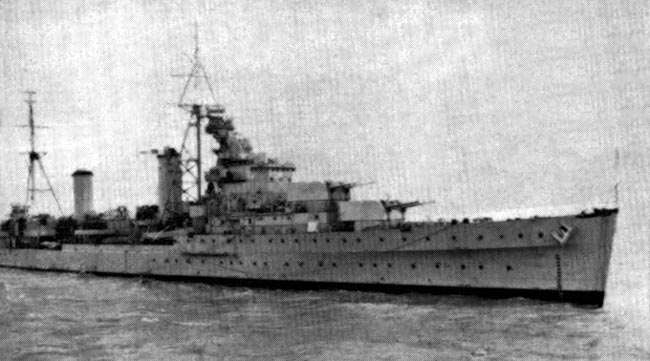
ROCS Chungking in 1948. Few photos exists of her.
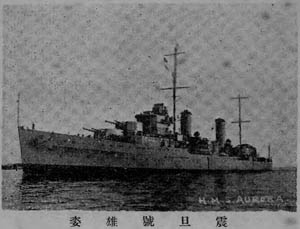 On 25 February 1949 she defected and was renamed by the communist Tchoung King. It happened in a premeditated manner, while storing gold bars in Shanghai’s financial district, claiming it was safer than bank vaults, before departing. Her attack by nationalist aviation on March 19, 1949 at the quay near the Taku forts, in the Tanggu district was performed by three B-24 Liberator successive raids.
On 25 February 1949 she defected and was renamed by the communist Tchoung King. It happened in a premeditated manner, while storing gold bars in Shanghai’s financial district, claiming it was safer than bank vaults, before departing. Her attack by nationalist aviation on March 19, 1949 at the quay near the Taku forts, in the Tanggu district was performed by three B-24 Liberator successive raids.
Sunk in Huludao harbour, her salvage wad done with Soviet assistance (The chinese had no dedicated ship for this task) and so she was was raised in 1951 with the help of the Soviet Union, but with one catch: They indeed recovered all the light anti-aircraft armament, radars, optics and means of communication toi be reverse-engineers and studied in detail. It even went further, in fact she was returned stripped bare as “repayment”. Her engines, removed, ended in the Shanghai Department of Electricity.
Instead she obtained engines from the scuttled Hai Yung, but was barely operable. But near empty she became an accommodation and warehouse ship, renamed Huang He in 1959, transferred to Shanghai on 27 October, converted as a salvage ship (cancelled), then retransferred to Tianjin in June 1965 and used as a barracks ship as “Pei Ching”, but scrapped during the Cultural Revolution. Her bell is visible at Military Museum of the Chinese People’s Revolution today.
PRC Escorts:
-Ku An of the Erotofu or Type A class, renamed Chang Pai, rearmed with three Soviet postwar 100mm and 3x 37mm and refitted as minelayer, stricken 1986
Type B escort Hui An, of the Urutu class, not renamed (apparently), rearmed 1960s and 70s with two 120mm, 6x 12.7mm AA and later three 100 mm, 4x 37mm for the East fleet, BU 1986
Type D escort Chieh 5, 6, 12 and 14, later renamed Wu Jang, Wai Hai, Jangsha, Shian, stricken circa 1986. They were rearmed with two Mk26 76mm guns, eight 37mm, four to eight 25mm in 1955. Two went with the North Fleet and two with the East Fleet.
PRC Gunboats:
-Chiang Yuan (1905, 550t), BU 1963
-Ming Cheun (1929, 420 tons), Memorial 1984.
-Yung Chi (ex-Hsai Hsing, ex-IJN Asuga, ex-Yung Chi, 1915, 860t. BU c1970
-Yung Sui (1929, 650t), stricken c1970
These vessels changed hands several times. Sunk or scuttled in 1937, raised and repaired by the Japanese, and then recaptured by Mao’s forces. Yat Sen was the largest, she had her poop deck removed, and was rebuilt as a training ship, rearmed with a single 20mm, one 76mm, two twin 40mm Bofors AA, six 7.7mm MGs. She also received a radar and sonar.
Yung Chi and Sui were former KMT gunboats sunk by the Communists in April 1949 and later raised, repaired.
PRC Riverine Gunboats:
Ying Shan (Petrol class HMS Gannet), Ying Teh (HMS Falcon), Ying Hao (HMS Sandpiper), Tai Yuan and Mei Yuan of the Wake class. All were stricken c1960. They were not captured but formally transferred to the Chinese Navy at Chungking in February 1942. In addition, Wai Ning was a 400 tons customs vessel from 1934, IJN Bunsei in 1937, recaptured by the PRC in 1945, sunk by the Communists in 1949, raised and repaired, BU c1960.
-Kiang Kun (ex-Narumi, ex Ermano Carlotto)
-Yang Ch’i (ex Toba)
-An Tung (ex Ataka)
-Chang Teh (ex Seta)
-Yung Ping and Yung An (ex Ataka class, Atami, Futami)
-Kiang Shih, Nan Shang (ex Atami class Fushima, Sumida)
-Wu Feng (ex-Maiko, ex-Macao, Portuguese gunboat)
-Chang Chi (ex Uji, Hashidate class). She was rearmed with Skoryi class guns (2x 130, 6x 37mm) in the 1950s, renamed Nan Chang, served with the east fleet until 1986.
Misc. PRC vessels
-Two ex Japanese Cha-I class sub-chasers Kao Ming, Kuang Kuo acquired 1945 and 1947.
-N200 and 201 of the Wa 1 class coastal minelayers, BU 1976.
-13 of around 30 ex-US LSTs were transferred to the PRC, the remainder going to the KMT in 1946-49. Some were still extant in 1995.
-15 ex-US LSM were also transferred at that time out of 30, delivered to the PRC, all but six discarded in 1993.
-15 LCT(5) and LCT(6) were also passed onto both sides, the PRC obtaining ten of them, dsiscarded circa 1986
-25 LCI were also passed to China, all but five to the PRC. They were discarded in the 1980s.
-14 ex-PC 173ft sub chasers were obtained by the PRC, known as the Chien Fang class. Two were lost during the civil war, the rest discarded in rhe 1960s and the last in 1971.
-5 YMS type motor minesweepers. Seized by the PRC, one stricken 1963, the rest 1976.
Development of the ROCN
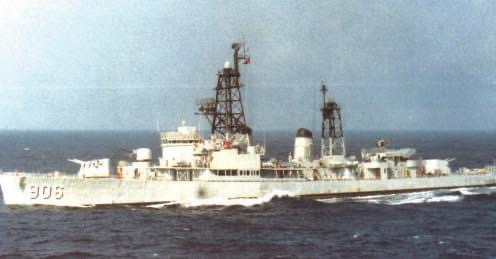
ROCS Hui Yang, a former Sumner class transferred in 1970, comprehensively modernized in the 1980s and 1990. She stayed in sevrice until 2003, sunk as target.
After the failure to stop the Communist forces crossing the Yangtze in April 1949, the Kuomintang commanders met on 16 July and decided to evacuate their remaining troops and ships 90 miles from the mainland to Taiwan and the other offshore islands. This was completed by 8 December, to the tune of two million people, and, although Hainan Island fell to Lin Piao’s Communists in 1950, Quemoy and Matsu remained under Kuomintang (Natonalist) control with the help of the US Seventh Fleet. Since then Taiwan, from her capital Taipei, has never ceased to claim to be the lawful ruler of all China (similarly the mainland claims sovereignty over Tarsaan With Amencan help, Taiwan retained China’s seat at the United Nations and it was not until the American rapprochement with Peking that Taiwan was expelled from the UN and the People’s Republic took her place on 26 October 1971.
Although about half the Chinese Navy ecither defected to the Communists or was captured by them, Taiwan retained all the larger ex-USN warships, and these formed the basis of her fleet for the early 1950s. Unlike the Communnists who rearmed all their ex-Japanese vessels, Taiwan only rearmed those in the best condition, and the others were left to rot until finally scrapped. A few ex British and Canadian vessels that had been demilitarised and sold to Chinese owners were also rearmed at this time.
A still tense situation
After the end of the Korean War, the Americans began building up the armed forces of their client states in the Far East, and Taiwan received several ex-Second World War US destroyers, destroyer escorts and smaller craft. Her amphibious forces were also built up at this time, so that they would be able to imvade the mainland if a suitable opportunity offered. There were a number of small clashes with the PRC Navy to the disadvantage of the ROCS, but the US 7th fleet was watchful of any major offensive. In 1958 for exemple, a second attempt to take the Quemoy islands and Matsu has the 7th fleet intervene as a deterrence. But its involvment from 1965 in Vietnam halted this support.
However the ROCs provided as much logistical support it could to the USN there, and gained an extra transfer of other ex-US warships in the following years, notably four Fletcher class in 1967-71 and Buckler/Rudderow class escorts in 1967-67. However after Vietnam, the US policy turned more towards China and started to develop relations that eventually cost the island its UN seat in the permanent security council. Also in 1978, the Carter administration not only withdrew dislomatic recoignition, but also abrogated the 1955 defence agreement.
To counterbalance this diplomatic gesture however, the white house agreed on the other hand massive transfer of vintage new ships, vintage Sumner and Gearing class between 1969 and 1983, which were protested by the PRC.
Changing Providers
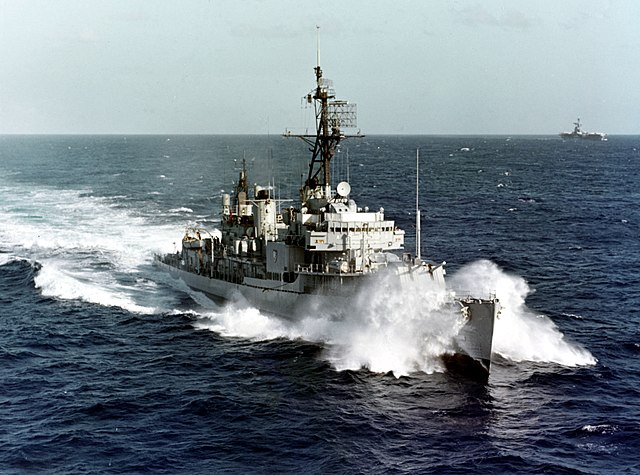
ROCS Chao Yang, ex-USS Rowan, a modernized Gearing class transferred in 1977.
After Chiang Kai shek passed out, his soon took succession of the country, but with the more intense rapporchement of the US towards China and lack of reliability as ally, trigerred a change of policy, notably to seek out contracts outside of the US. But this was met with caution by these countries, mainly Europe, not to offend China, as in the early 1980s the PRC was now open to investments and seemed like a giant eldorado. Taiwan found a partner for military matters in Israel, notably to develop a local copy of the SSM Gabriel, as its first domestic antiship missile, the Hsiung Feng I. This was followed by another milestone in the 1990s with the Hsiung Feng II, an quivalent of the Harpoon. But Chinese pressure prevailed against other attemps like the discussed transfer in 1984 of the former Zwaardvis class ships from the Netherlands. France also in 1993 had to withdrew its proposal for Agosta class submarines.
All this time, the Taiwanese naval policy followed the strenght and weaknesses of the growing PLAN. Since its major asset was submarines, the ROCS increased its main doctrine on ASW, fearing a complete blockade of the country in the 1980s, now an industrial powerhouse, recoignised notably by its supraconductors and processors’s leadership. In the late 1980s when the PLAN grew several fold, this time with its surface fleet, Taiwan accordingly increased its antiship potential, notably through the development of a fleet of FAC (Fast Attack Crafts) all armed with locally developed SSM. Nothing was forgotten, notably keeping a strong amphibious force and a suberbly trained Marine Corps in order to potentially retake any island invaded by the PRC.
It was ultimately pushed to reach 37,000 active and 32,000 reservist personal, making it the world’s second largest Marines Force after the USMC in 1995. Since the 2010s one of the PLAN’s objectives had been to develop a superior Marines Force.
Post-cold war ROCN growth
Since the 1990s the Navy has grown in importance following the main objective of the ROC’s military to counter an always possible PRC blockade, offshore engagement and even an invasion. Since Xi Jinping’s clear mentions for the future anniversary of the PRC in 2049 of recovering the island, most experts nowadays points out 2027 as the most likely date for an invasion, the Chinese Navy ramping up its manoeuvers, exercizes and accepting new assets, locally sources as the US support is sometimes wavering.
As of 2004 the ROCN started already to expand its capabilities, notably on one of the country’s strongpoint, electronics, and in anti-submarine warfare, replacing antiquated warships and support vessels along the way. Slowly but surely, old foreign-designed vessels were gradually replaced by indigenous platforms, sensors, and weapons from the National Chung-Shan Institute of Science and Technology.
In 2018, Lungteh Shipbuilding was awarded a contract for eleven Tuo Chiang Block II corvettes, four minelayers and it was only as start. In April 2020 after the COVID-19 pandemic cut short the Navy’s semi-annual goodwill visit in South America, and the flotilla stayed 30 days in quarantine while back. In April 2020 Karmin International Co., Ltd. started to produce eighteen “special operations” watercraft, eight RIB tenders destined to the Cheng Kung-class frigates planned for the summer of 2022.
ROCN equipment from the United States, including for the main, elderly assets such as the Kidd class Destroyers and Knox class frigates, which succeeded to the WW2 destroyers, is slowly but surely updated with domestically built ships and systems, often under licence, or through domestic development, well supported by an high-end industry. The ROCN purchased eventually indirectly La Fayette-class frigates (A tailored version was built locally) from France and Zwaardvis-class submarines and refurbishing, extending service life and equipment always had been fustrated by massive pression from the PRC. If the U.S. has approved sales of eight new diesel-powered submarines, engines cannot be produced at home. To add insult to injury, the Legislative Yuan did not approved one important baval budget and slowed opportunities to procure better underwater defense capability.
On 12 September 2007 however, an arms notification to the US for the procurement of 12 P-3C Orion and 3 spares, plus 144 SM-2 Block IIIA surface-to-air missiles was granted, and awarded to Lockheed Martin, refurbishing the 12 patrol planes. In 2008, 26 August, another order camd for 60 air-launched Harpoon Block II missiles, to equip the 12 P-3Cs, some to be also installed on the Hai Lung-class submarines. On 29 January 2010 arms sales to the ROC was ramped up to US$6.392 billion, going with two Osprey-class minehunters (US$105 million) Link and terminals ships systems (US$340 million), as well as 12 Harpoon L/II (US$37 million). They came in addition to the 95 older Harpoon in inventory on the Knox-class frigates, and 22 RGM-84L (Kidd-class). To this were ordered 32 sub-launched Harpoon II (Hai Lung-class).
On 31 August 2010, the ROC expressed the desire to lease US Newport-class tank landing ships while the 900-ton stealth corvette was put on hold, but On 29 September, another Osprey-class minehunter was granted by the Congress. From an hinderance to US Policy in the 1980-90s, desilusions about the Chinese posture and agressive stance in the Spratleys and throught South China sea radically changed the US Policy this time against the PRC, seeing Taiwan like a now indispensible partner and ally in the region. No political alternance has changed this move so far.
Local upgrade program included the Ching Chiang class patrol ships, all now equipped with four HF-1 SSMs and from 2004, four HF-2/3 with W-160 fire control radar (Wu Chin III program) and the Honeywell H-930 MCS CDS retired from older ships. In 2010, CSIST is providing the new locally-built fire control radars. Thus, the Ching Chiang class had been considerably enhanced and modernized.
By December the same year, old assets are retired such as two LSTs, four Adjutant-class, and more in 2011, like the PCL of the 124th Fleet, two Lung Jiang-class guided missile patrol boats, and all ships dating back the 1980s are undergoing the same schedule.
By June 2018, two new modernized Oliver Hazard Perry-class frigates, USS Taylor and Gary were transferred (US$177 million) along with the advanced AN/SQR-19 Multi-Function Towed array sonar. The idea is that these systems could be reproduced locally to modernize in turn the old Knox-class frigates, or be followed by more OHP class frigates, retired in the US since years and in the process of replacement by the new Constellation class. Taiwan has now ten of these OHP class vessels in service today.
The Taiwanese Navy Today
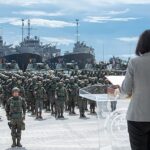
Could Taiwan stop a Chinese invasion ? After all, its the British Royal Navy that repeatedly defeated invasions, securing their place in history, despite all odds like against the Invincible Armada during Elisabeth’s reign or Napoleon’s combined Franco-Spanish Navy.
The Navy as of today comprises: 4 Destroyers, 22 Frigates, 31 Missile FAC, 4 Submarines, 14 Corvettes, 13 Mine warfare vessels, 7 Amphibious tank landing, 10 Auxiliaries.
Among other programs, one which is quite interesting is the ROCS Landing Platform Dock, first Taiwanese Amphibious Assault Ship of the Yushan-class. It was conformed in September 2018, built by CSBC Corporation, with Four planned, the first commissioned in 2021. Another ambitious program is the Hsun Lien Project, a locally developed SAM to replace the obsolete Mark 26 standard of the 1970s. It was also raised the point of lacking a centralized air defense combat compatable to Aegis which past US administrations rejected to be sold, or Arleigh Burke-class destroyers.
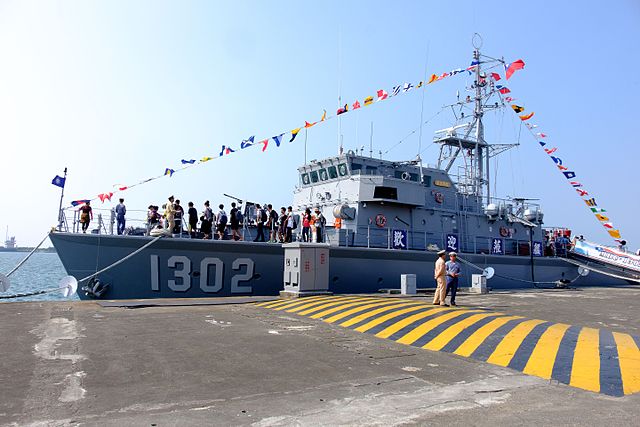
ROCN Yung Chia (MHC-1302) shipped at N°7 east pier, Zuoying Naval Base
Under the Bush administration instead, four older Kidd-class destroyers, deactivated at the time, were granted to Taiwan. Fast forward and by January 2019, the US government delivered two sets of Mk 41 VLS to Taiwan and plans were made to integrate it with the Tien-Kung III (Sky Bow III) missile system and Hsun Lien naval combat system equivalent to Aegis. Eventually Taowan also acquired the license for the MK 41 VLS launcher. The AN/SLQ-32 system (Kee Lung class) is currently upgraded, to be over by 2023. In November 2019 the Kao Hsiung (LCC-1) became a test ship for the Hsun Lien naval combat system, coupling a large phased array radar system and Mark 41 VLS. In January 2020 this was unveiled as the Tien-Kung III (Sky Bow III) system.
The other major program of the current decade is the Indigenous Defense Submarine (IDS):
In November 2020, President Tsai Ing-wen inaugurated a new submarine construction facility in Kaohsiung, planning eight submarines, started with a prototype built over 78 months and scheduled to enter service in 2025. The main submarine was to be of local design, but the US agreed in 2020-21 to export key systems to “fill” it, digital sonar, integrated combat and auxiliary equipment systems, notably periscopes. This Soryu-class inspire design uses new battery technologies, probably lithium-ion, is rated to circa 2,500 tonnes (2,500 long tons; 2,800 short tons) for around 70 meters long, and using MK-48 Mod 6 Advanced Technology heavyweight torpedoes and UGM-84L sub-launched Harpoon Block II missiles, both approved for transfer by the Trump administration. The first (unnamed) was laid down on November 2021, and is expected for launch in September 2023. That would open many doors for Taiwan if that class is successful, notably as an export product. Competition for SSK is fierce though. look of the IDS
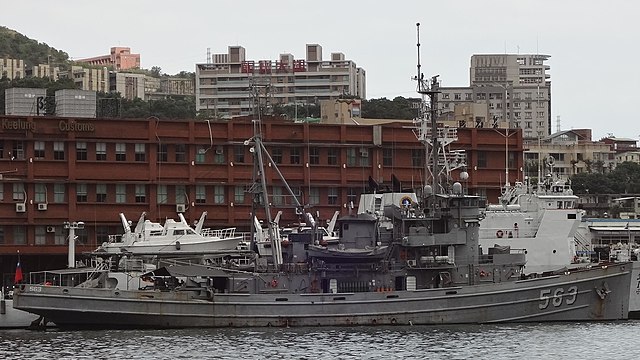
ROCN ATF-563 in port of Keelung
Here is a review of the ROCS as of today and analysis:
Organization of the ROCS
Command Headquarters
(Today headed by Admiral Liu Chih-pin with Vice Admiral Hu Zhan-Hao, and Tang Hua Deputy Commanding-Generals).
It is subordinate to the General Staff and Minister of Defense under the ROC President, today Tsai Ing-wen.
- 124th Fleet: Zuoying District, Kaohsiung City
- 131st Fleet: Keelung City, Taiwan
- 146th Fleet in Magong City, Penghu County, Taiwan
- The Amphibious Fleet (151st) in Zuoying District, Kaohsiung
- 168th Fleet at Suao, Yilan County, Taiwan
- 192nd Fleet (Minesweeper Fleet) at Zuoying District
- 256th Submarine Squadron at Zuoying District
- 261st Squadron of FAC/M:
- Hai Chiao(Sea Dragon) PGMG Guided Missile Boat/Craft Group: 1, 2, 3, 4, 5 Hai Chiao Guided Missile Boat/Craft Squadrons: Each 10 Kuang Hua VI, or 10 Hai Ou (Dvora)
- Hai Feng Shore Based Anti-ship Missile Group (6 batt. HF-2 anti-ship missiles).
- 7th Hai Feng Shore Based Anti-ship Missile Squadron (Haulien)
Naval Fleets Command
Aviation Command:
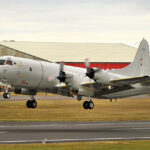
P3C Orion. Photo of a Taiwanese example
Operates from Pingtung, Tsoying, and Hualien AB:
- 12 P-3C* acquired in 2013/2014 at Pingtung Base
- 1st ASW Aviation Group (133rd, 134th Squadrons Pingtung with the S-2T*
- 2nd ASW Aviation Group (701, 702, 501 Helicopter Squadron S-70C(M)-1 at 500MD, at Hualien and Tsoying.
*The Republic of China Navy obtained 12 P-3C under the US Foreign Military Sales program in 2007, modernized and refusbished for 15,000 flight hours. Three “spare” airframes for the EP-3E standard were also provided and in May 2014 Lockheed Martin was awared the modernization and overhaul of all these, completed by August 2015.
**The S2T was the local variant of the Grumman S-2 Tracker. The ROC Air Force initially operated the S-2A in 1967 and by 1976, S-2Es started to be received the former ones later converted into target aircraft and decommissioned 1979-1992. In 1986, S-2Gs were purchased and were modernized that year in the S-2T configuration with two Garrett/Honeywell TPE-331-15AW turboprop engines (1,227 kW (1,645 shp) and four-blade propellers, the AN/AQS-92F digital sonobuoy processor, A/NARR-84 99-channel sonobuoy receiver, Litton AN/APS-504 radar, AN/ASQ-504 MAD and AN/AAS-40 FLIR.
Thes 27 S-2Ts fell under ROCN Aviation Command on 1 July 1999, 2013, the S-2s were transferred back intobut from 2013 back to ROCAF service, all discarded from May 2017. ✈ photo
The ROCN air park also includes Lockheed three EP-3E ARIES (Signals reconnaissance) plus three Spares and 29 NCSIST Albatross Reconnaissance UAV acquired in 2019.
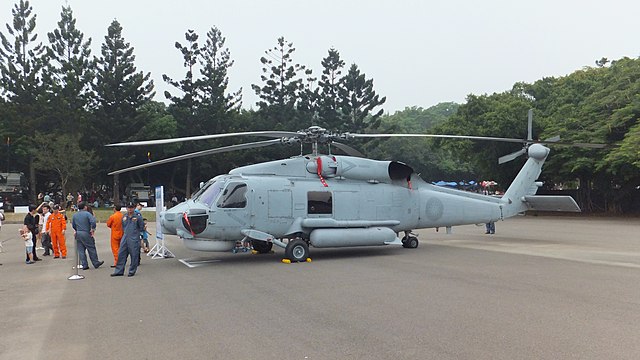
ROCN S-70CM on display at Chengkungling in October 2011
Maintenance Group
The 1st, 2nd, 3rd Squadrons are located at Pingtung, Tsoying, and Hualien.
Marine Corps Command:
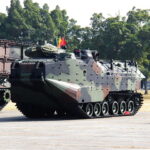
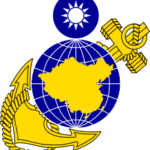 The ROCs Marines had an obvious connection to the USMC, starting with matériel, since in 1950, ROCS had 11 LSTs, 11 LSM, 5 LCT(5) and one LCT(6) and 5 LCI (one 1 LCI(M)).
The ROCs Marines had an obvious connection to the USMC, starting with matériel, since in 1950, ROCS had 11 LSTs, 11 LSM, 5 LCT(5) and one LCT(6) and 5 LCI (one 1 LCI(M)).
It was established in 1914 already and called ROCMC, now as an elite force, notably because of its gruelling “Road to Heaven” stage, and using the equivalent of “Semper Fidelis” as motto. ROC Marines trains regularly with the USMC.
It comprised a Marine Corps Command (centralized HQ) and a Corps HQ Battalion, from 2013, a Combat Support Group with various units:
-There is an armoured component, the Amphibious Armor Group with 4 Amphibious Transport Squadrons (24 tracked vehicles each) (1st (AAV-7), 2nd (AAV-7), 3rd (LVT-5), 4th (LVT-5))and two Amphibious Artillery Squadrons in support with mortar teams carried by the 1st (LVT-5) and 2nd (LVT-5) squadrons.
-The Amphibious Reconnaissance and Patrol Unit, equivalent to the SEALs, 600 strong with helf being aboriginal Taiwanese.
-The Combat Support Group (Beach Logistics, Com, Information, EC Warfare Group, Corps HQ Battalion
-Wuchiu Garrison Command
-Armed Force Joint Operation Training Base
-Marine Corps Command (infantry, with the 66, 77, 99th brigades)
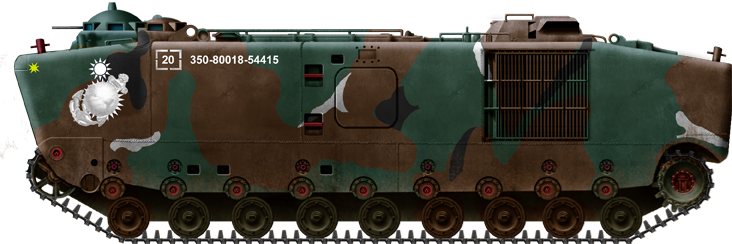
Other Commands
- Education
- Training and Doctrine Command
- Logistics command
- Naval Academy
- Hydrographic & Oceanographic Bureau
- Shipbuilding Development Center
- Communication Systems
- General Service.
 Kee Lung-class missile destroyers (2003. 1979 Kidd class)
Kee Lung-class missile destroyers (2003. 1979 Kidd class)
ROCS Kee Lung, Su Ao, Tso Ying, Ma Kong
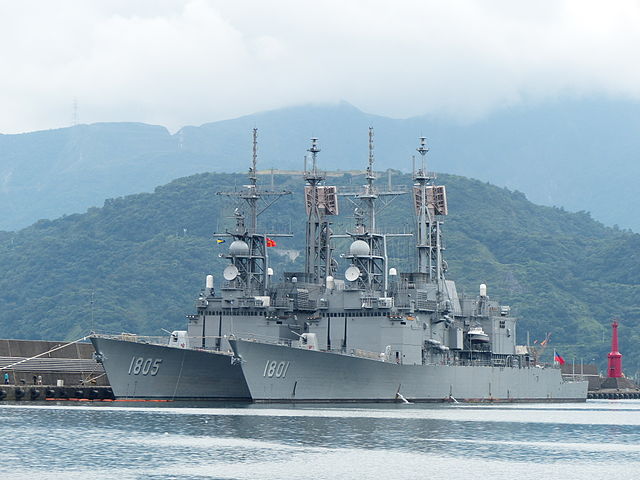
These are basically some of the former Kidd-class destroyers (an improved version of the Sruance class) built in 1978. Originally built for the Imperial Iranian Navy and transferred (purchased) by Taiwan in 2003. Many upgrades are programmed so that they reaches gradually the level of the Arleigh Burke class. Armaments and systems are planned for a local upgrade in the current years.
 Cheng Kung-class Frigates (Perry class)
Cheng Kung-class Frigates (Perry class)
ROCS Cheng Kung, Cheng Ho, Chi Kuang, Yueh Fei, Tzu I, Pan Chao, Chang Chien, Tian Dan, Ming Chuan, Feng Jia (PFG-1115)
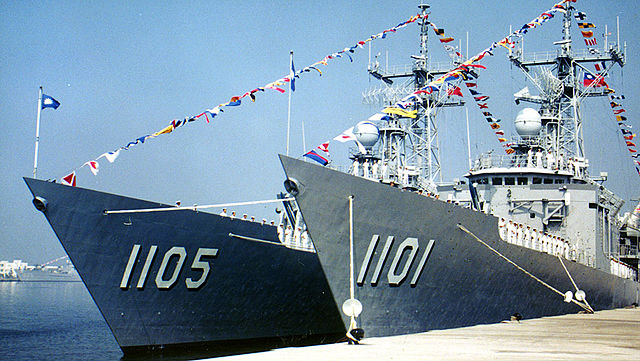
The Oliver Hazard Perry defined a standard for Frigates (mainly tasked of ASW warfare) in the US with 71 built in 1975-1989, later exported as they were dedcommissioned without replacement in the USN to the Turkish, RAN, Royal Bahrain Naval Force, Egyptian, Pakistani, Polish, Spanish and Chilean Navies. The Chang Kung class were planned in 1990 for the ROC on demand, to be built at China Shipbuilding, Kaohsiung, in 1993-2004, plus two more in 2018, for a total of ten. Armament was standard USN but with OTO Melara fast guns, four Hsiung Feng II and four Hsiung Feng III SSM and the Sky Bow air defense system replacing the SM-1 and Mk 13 launchers in the 2020s. They are intended to serve FY2035 at the least.
 Kang Ding-class (1994)
Kang Ding-class (1994)
ROCS Kang Ding, Si Ning, Wu Chang, Di Hua, Kun Ming, Chen De
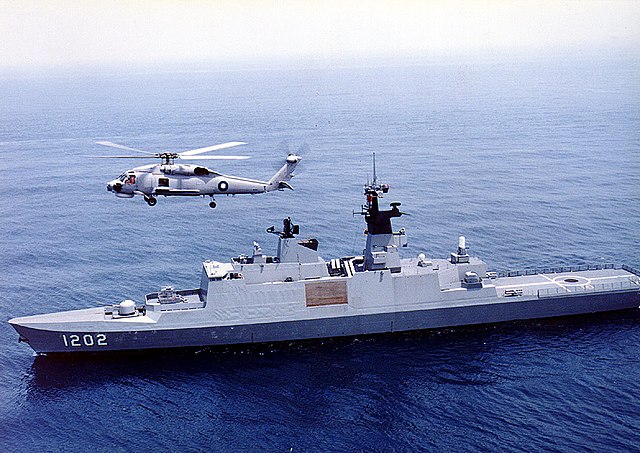
Taiwanese versions, tailored, of the French Lafayette class stealthy frigates. Commissioned in 1996-98, they are equipped with ASW weaponry, and for surface warfare first. In 2021 it was reported an upgrade program with the MIM-72 Chaparral SAM replaced by the locam Sky Sword II, and overhaul of the whole battle system as well as adoption as standard SAM the AMRAAM-class missiles quad-packed in a vertical launch system.
 Chi Yang class (Knox class, transferred 1994)
Chi Yang class (Knox class, transferred 1994)
ROCS Fong Yang, Fen Yang, Lan Yang, Hwai Yang, Ning Yang, Yi Yang
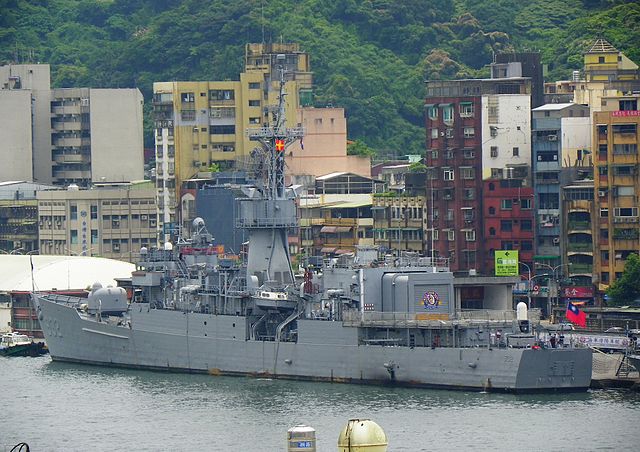
Although built in the 1960s, the Knox class were gradually decommissioned after the cold war, replaced by the OH Perry, and exported to the Egyptian, Hellenic, Mexican, Royal Thai and Turkish Navy, and from 1994, to the ROCN. However the latter had problems maintaining their steam plants and only budget concerns prevented their replacement by diesels. Assigned to the ROCN 168 Patrol Squadron, they were modernized in 2005, receiving systems from the retired Gearing class with the SM-1MR Standard (box launchers), H-930 modular combat system, DA-08 air/surface search radar, STIR-180 lighting radar and 10 SM-1 are installed in two forward twin box launchers, on top of the helicopter hanga, plus 2×3 box launchers between the stack and hangar. Chi Yang (FFG-932) was left in her previous state. ASW capability was pushed by the adoption of the original SQS-26 bow-mounted sonar, the new SQS-35(v) VDS, the SQR-18(v)1 passive TAS, and a MD500 ASW helicopter plus Mk-16 8-cell Harpoon/RUR-5 ASROC box launcher, four Mk46 324 mm (12.8 in) torpedoes. The box launcher usually carried both two Harpoon and six ASROCs. Upgrade to the Hsiung Feng III SSM is planned also for the 2020s
 Ching Chiang-class corvettes (1998)
Ching Chiang-class corvettes (1998)
ROCS Dan Chiang, Sing Chiang, Tzeng Chiang, Kao Chiang, Jin Chiang, Hsiang Chiang, Tze Chiang, Po Chiang, Chang Chiang, Chu Chiang
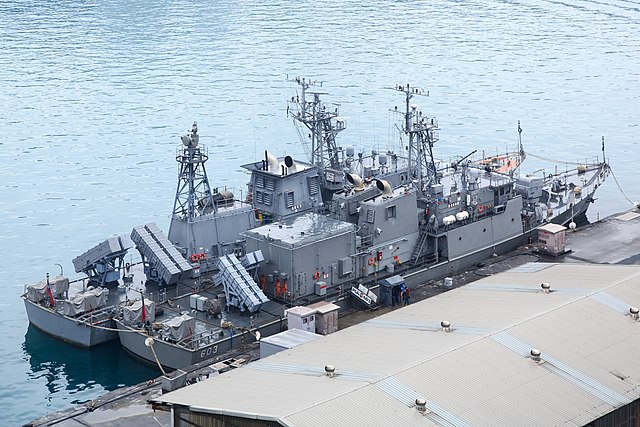
The Ching Chiang-class patrol ship were one of the Taiwanese-built vessels of the post-cold war era. They were first planned in 1990 given the uncertain stance of the US, and are patrol ship rated as corvettes due to their ASW capabilities and armament, but are mostly glorified 500 tonnes FACs. Initially equipped with the HF-1 anti-ship missile, a single 40 mm, one 20 mm guns. Upgrades started in 2012 with the addition of four HF-3 supersonic SSM launchers and one OTO Melara 76 mm replacing the 40 mm.
 Tuo Chiang class Corvettes (2020)
Tuo Chiang class Corvettes (2020)
ROCS Tuo Chiang, Ta Chiang, Fu Chiang
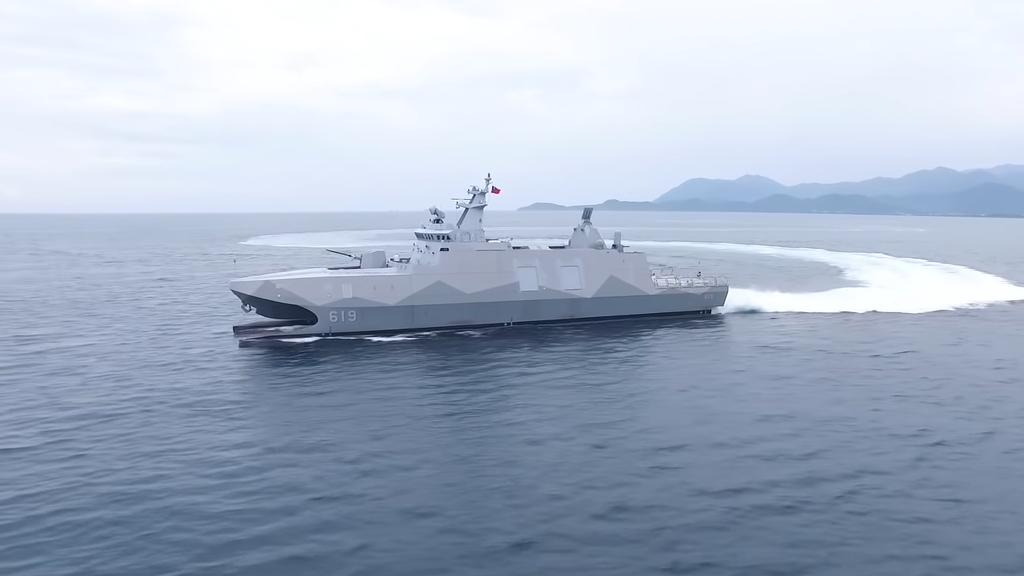
Built in 2012-2014, these were the most modern ships built in Taiwan until then, bot stealthy and catamaran. They were noted by other navies. The program cost was stagerring for the prototype, at NT$5.4 billion (US$188 million), the second and third bring built with a modified hull. These fast (45 knots) and stealthy multi-mission corvettes were tailored for hit-and-run tactics when facing the PLAN, with a very clean upper structure design, pre-cooled engine exhaust and generally reduced visual signature. The first is armed with eight Hsiung Feng II, eight Hsiung Feng III, an OTO 76 mm gun, a Phalanx CIWS, 2x M2HB, and two Mark 32 triple torpedo launcher, emphasizing her mainly anti-surface role. From Ta Chiang the serie is planned to carry sixteen TC-2N missiles, eight and four Hsiung Feng II/III, and same as above less the TTs.
 Kuang Hua VI-class FACs (2002) FACG-60-93
Kuang Hua VI-class FACs (2002) FACG-60-93
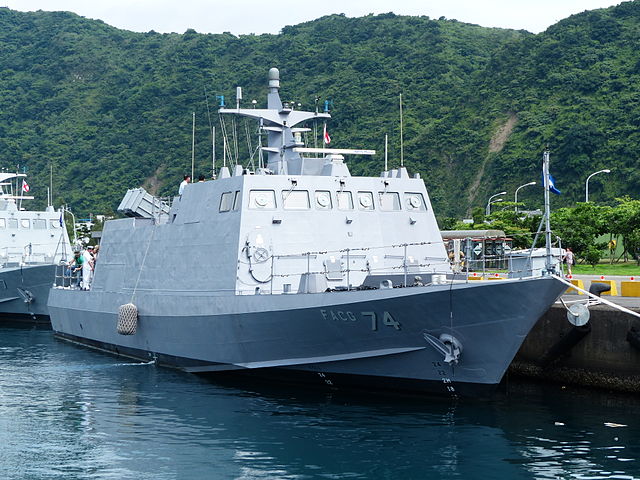
The bedrock of current Taiwanese coastal force. These are all missile armed, mainly for antiship missions.
 Yung Feng-class Minehunters (1991)
Yung Feng-class Minehunters (1991)

The Yung Feng class are recent coastal minehunters used to track and identify, as well as dispose of moored and bottom naval mines, built in Germany (Abeking & Rasmussen) and commissioned in 1991.
In addition, pending retirement, the original ROCS Yung Feng class is the remaining US Aggressive class ship, comprising the 735 tonnes ROCS Yung Tzu, Yung Ku, and Yung Teh the latter two decommissioned.
 Yung Jin-class Minesweepers (1993)
Yung Jin-class Minesweepers (1993)
ROCS Yung Jin, Yung An
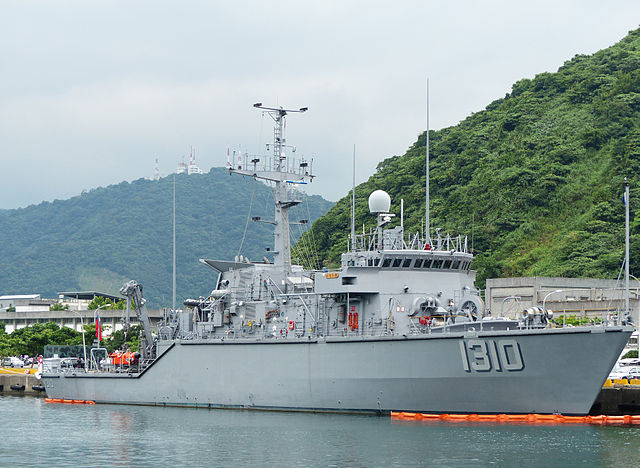
The new generation of Taiwanese Minesweepers. They are of the US Osprey class, built in Intermarine USA and Avondale Shipyard in the early 1990s. The ex-USS Oriole and Falcon (MHC-55 and 59) resold in 2006-2007. US Boats non sold were retired in 2007 and sold for BU in 2014, the remainder two, sold to Egypt.
 Min Jiang-class minelayers (2020)
Min Jiang-class minelayers (2020)
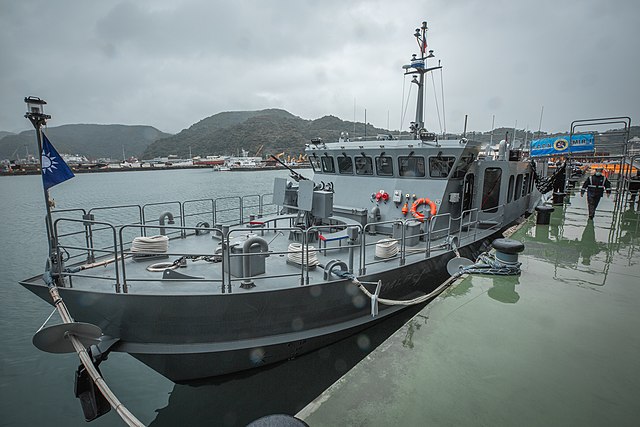
FMLB-1 to FMLB-5, all built in Lung Teh Shipbuilding, by 2020-2021. Referred to as the Min Jiang-class in the international sources, the ROCN class designation is not clear, as the first was designated FMLB-I (Fast Mine Laying Boat) and so possibly numbered instead of named.
They are 347 tons FL in displacement for 14 knots, 41m long, 8.8m wide, 1.7m in draught.
They used a precision automated minelaying system and could defend themselves with a T-75 cannon, and two T74 machine guns for AA defence. The first vessel was launched in August 2020 at Lung Teh (Yilan County), followed by another in September 2021, third and fourth in December. Until the, the rol was filled by converted amphibious landing crafts.
 Ushan class LSD (2020)
Ushan class LSD (2020)
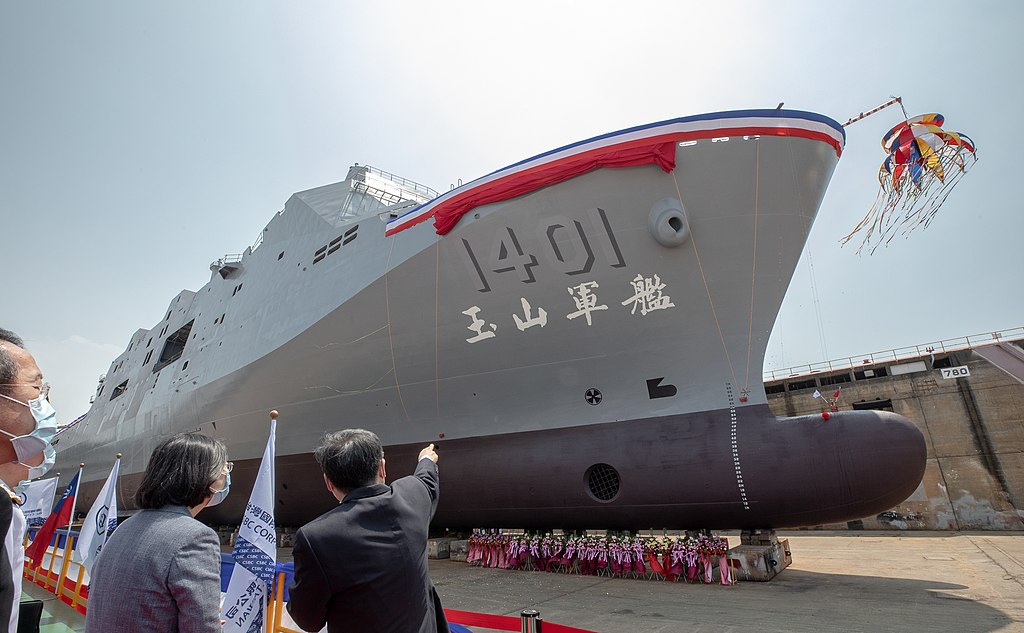
Roughly similar to the USN San Antonio class but smaller, this new class is multirole, with a full hospital for humanitarian aid and fleet support, a well deck and full aviation facilities. The internal capacity authorized storage of extra wheeled vehicles in addition to the AA7Vs, and they can carry a full battalion of Marines. They had an OTO Melara 76 mm naval gun, a CIWS and two cal. 05 forward section, but counts mostly on the Hsiung Feng II and III SSM and cruise missiles, completed by the CS/MPQ-90 Bee Eye AESA radar. At 10,600 t, 153 m x 23 m they are the largest ships ever built in Taiwan, to be followed by more ambitious ones in the future.
 Other ROCS amphibious ships
Other ROCS amphibious ships
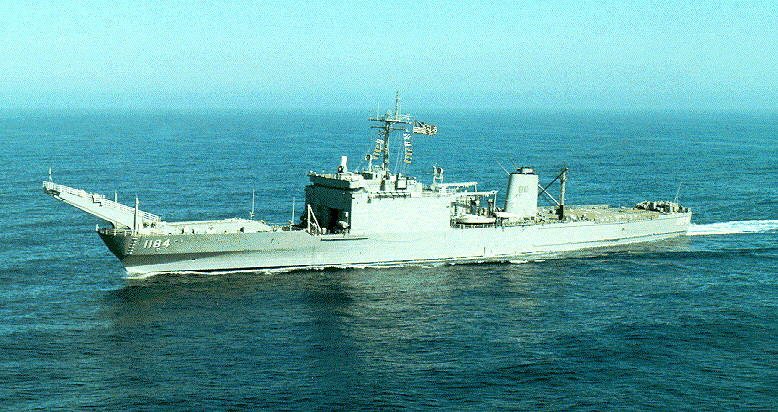
ROCS Chung (HO LST 232)
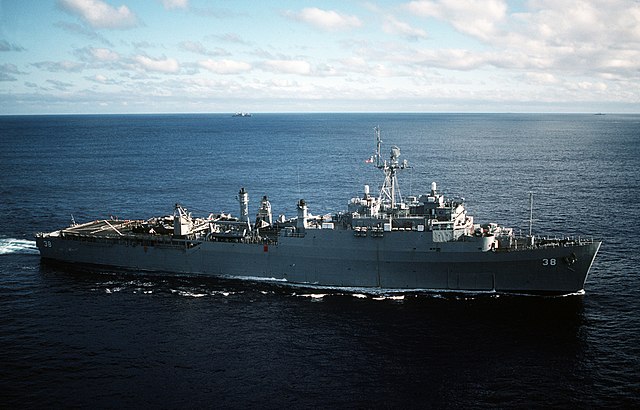
ROCS Hsu Hai (LSD 193)
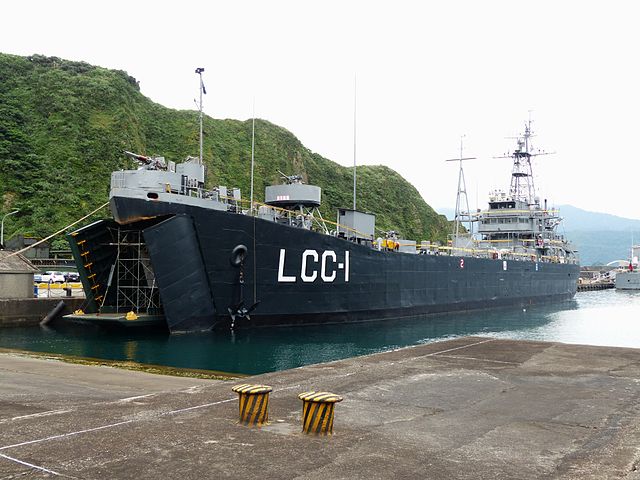
ROCN Kao Hsuing LCC-1, Zhongzheng Naval Base
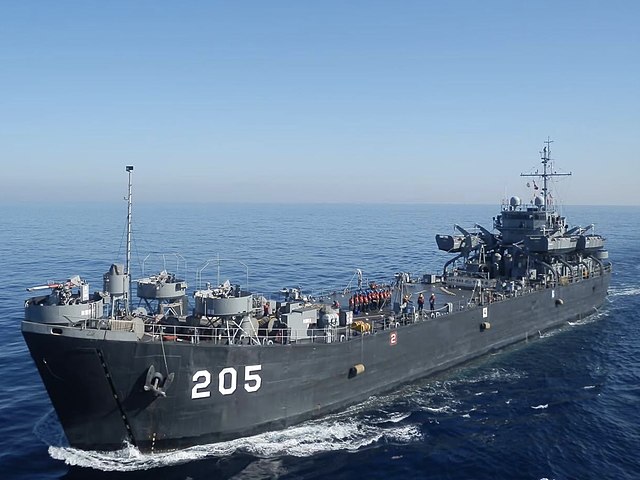
ROCS Chung Chien (LST-205)
To replace its WW2 amphibious fleet in the late cold war, Taiwan purchased new vessels in several batches.
–Newport class ROCS Chung Ho (LST-232), ROCS Chung Ping (LST-233)
-Chung Hai-class (Former LSTs) ROCS Chung Chien, Chung Chih, Chung Ming, Chung Ye
-ROCS Kao Hsiung (LCC-1) Command LST, ex-USS Dukes County (LST-735)
-ROCS Hsu Hai (LSD-193) the 13,700 tonnes ex-USS Pensacola (LSD-38) Anchorage-class DLS.
Still active: Two Chien Lung-class subs, ROCS Hai Lung (SS-793) and ROCS Hai Hu (SS-794) 2,660 tonnes modified Zwaardvis-class (1986).
To be retired: Two GUPPY III, ROCS Hai Shih (SS-791) and ROCS Hai Bao (SS-792) used for training, using the very old Arma gyrocompass, to be replaced by the IDS project
 Support Ships and Auxiliaries
Support Ships and Auxiliaries
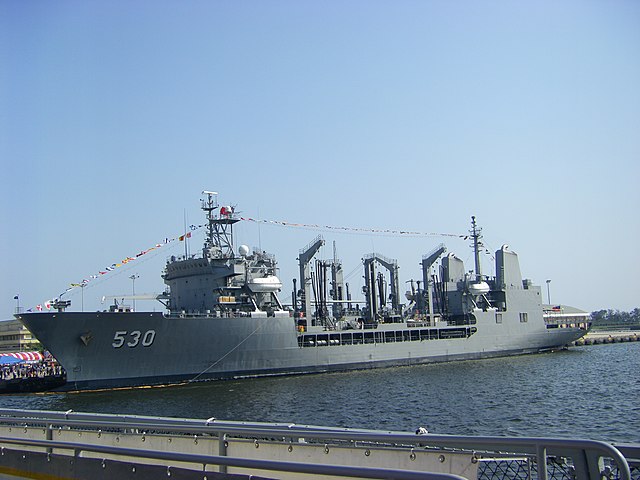
ROCS Wu Yi AOE-530
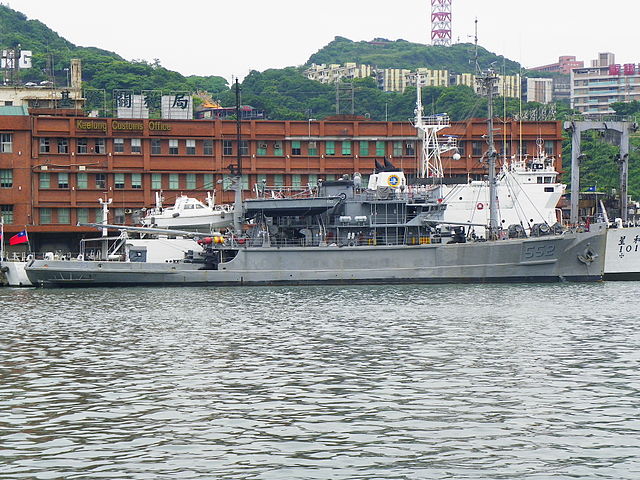
ROCN Da Hu in Keeling Harbor
2 Resplenishment ships: ROCS Pan Shi (AOE-532), ROCS Wu Yi (AOE-530). Research ship ROCS Ta Kuan (AGS-1601), two old rescue and salvage ship (ROCS Ta Hu and Ta Twen), and equally antiquated ROCS Ta Wan (ATF-551), Ta Tung, Ta Tai fleet tugs.
Sources
Books
The Republic of China Navy: The World’s Navies Volume 1 by Simon Beerbaum (English Edition)
A History of the Modern Chinese Navy, 1840–2020 By Bruce A. Elleman
Taiwan Straits: Crisis in Asia and the Role of the U.S. Navy (Global Flashpoints: A Series) by Bruce A. Elleman
The Great Wall at Sea: China’s Navy Enters the Twenty-first Century Bernard D. Cole, Naval Institute Press, 2001
Crossing the Strait: China’s Military Prepares for War with Taiwan – National Defense University Press. PDF
Links
https://navy.mnd.gov.tw/en/index.aspx
https://www.globalsecurity.org/military/world/taiwan/navy.htm
https://www.wdmmw.org/republic-of-china-navy-taiwan.php
https://www.seaforces.org/marint/Republic-China-Navy/ships.htm
https://www.wdmmw.org/republic-of-china-navy-taiwan.php
http://www.navypedia.org/ships/taiwan/tai_index.htm
https://en.wikipedia.org/wiki/Republic_of_China_Navy
https://en.wikipedia.org/wiki/Geography_of_Taiwan
https://en.wikipedia.org/wiki/History_of_Taiwan
Videos
Taiwan Navy Launches Latest Stealth Corvette | TaiwanPlus News
Overview of Taiwanese Navy Warships
Taiwan’s Navy Welcomes Newest Yushan Warship | TaiwanPlus News
The Cold War Taiwanese Navy (1949-1991)
 Destroyer Tan Yang (1947)
Destroyer Tan Yang (1947)

ROCS Tan(Dan) Yang and other escorts alongside in 1949
On 6 July 1947, IJN Yukikaze, surrendered to the allies, was transferred to the Republic of China as war reparation in and renamed Dan Yang (丹陽), pennant DD-12. “Yang” (“virility”) necame a staple of destroyer names in ROCS regardless of their origin. Largest ship ever of ROCS, she became de facto flagship, without her original armament, and so an unarmed training vessel until 1952. In 1953, she received three original Japanese twin Type 89 12.7 cm/40 dual guns, and eight (four twin) 25mm AA, as well as the original Type 98 10cm/65 dual mounts.
-In 1956, Dan Yang saw this Japanese armament removed and replaced by three US 5″/38 cal., the torpedo tubes were landed and replaced by two 3″/50 and completed by seventeen Bofors 40 mm guns, plus new US pattern depth charge launchers. This change was more a matter of supply than anything else.
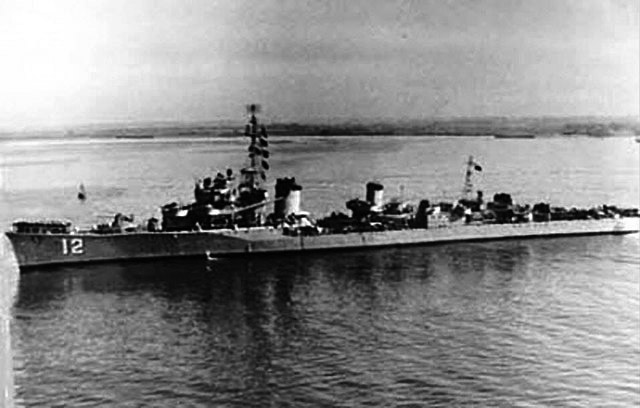
Dan Yang, source: ROC Navy Memorial Digital Archives, Academia Sinica Center for Digital Cultures
She visited Manila, being visited by some 50,000 overseas Chinese in August 1953 and spent most of her career patrolling the South China Sea, intercepting incoming vessels carrying wartime supplies into Shanghai. On 4 October 1953, she captured the Polish civilian oil tanker Praca in southeast of Taiwan, suspected to carry Soviet equipments and on 12 May 1954 shelled and captured another Polish freighter, Prezydent Gottwald. It carried machinery and medicine to China. On 23 June 1954, she captured the oil tanker Tuapse from Soviet Union, this time carrying kerosene close to the Balintang Channel, Philippines. Crews had various fates, some emprisoned for 35 years, released in 1988. She took part in many other warninf actions in the Taiwan Strait. The arrival of US destroyers forced the retirement of this first flagship, BU 1971 after a typhoon in 1969, so damaged repairs were never carried out. Japan meanwhile started to negociate her return to be converted as a museim ship, but only her rudder one anchor were repatriated as a good will gesture.
 Lo Yang class destroyers (1954)
Lo Yang class destroyers (1954)
ROCS Lo Yang, Han Yang, Nan Yang, Hsien Yang

The date given are those of transfer for the first two, Benson and Hilary P. Jones, 1955 for USS Rodman and 1959 for USS Plunkett. New names above. The first two were presented to Taiwan whereas the last two were on loan, transferred in addition to the ex-Japanese Hatakaze and Asakaze; Although the Benson class was a prewar design, they shared the same weapons systems and general design as the later Fletcher class, which were planned for transfer in the future. They helped to create a first ROCN destroyer flotilla. Unfortunately by the time they arrived, Taiwan no longer had a cruiser, now in PRC hands.
The ex-Japanese destroyers were not even pressed into service and used for spare parts only. However Hatazaze later became a minesweepers, modified with the rear part modified, as the ex-Hatakaze. Nan Yang was the only one to retain her TTs. As the result of a survey made of her early in 1974, she was replaced by a namesake destroyer provided by the Navy on loan in 1975, former USS Taussig (DD-746). She was discarded in 1975 as the others, Hsien Yang in 1976.
Similar to “stock” 1945 modernized Bensons, with four original guns, four Bofors and six Oerlikon, no TTs (but Nan Yang) and a DC radar, SG radar and Mk.4 sonar.
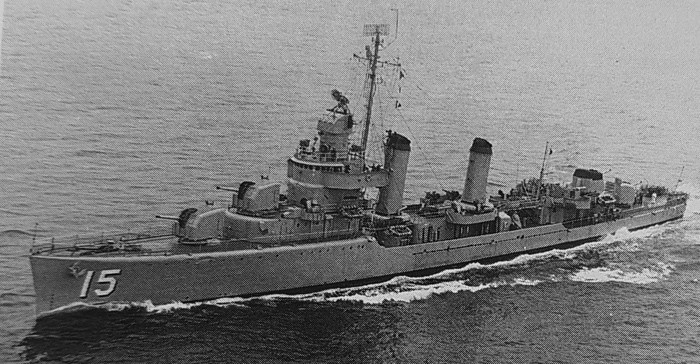
ROCS Han Yang
 An Yang class destroyers (1967)
An Yang class destroyers (1967)
ROCS An Yang, Chiang Yang, Kun Yang, Kwei Yang

ROCS An Yang in the 1970s, src navsource.
In 1967 was transferred the first of modernized Fletcher class destroyers, USS Kimberly, followed in 1968 by USS Yarnell. In 1971, August and October were transferred the last two, USS Twining and Mullany. An Yang was commissioned on 1 June 1967.
A fifth unit, USS Sprotson, was transferred in 1968 for cannibalisation and spares. Armament initially was the original one, with five 5-in/38, three twin Bofors, three twin oerlikon a quintuple TT bank, two Hedhehog Mk.2, but soon altered. Cinang Yong was transferred with four 5-in/38 instead, three twin of the new 76 mm in Q position between funnel, and modern triple 324mm ASW TTs Mk.48. had for electronnics, the SPS-10, SPS-12, Mk 25, Mk 37, Mk 56 and Mk 63 FCS radars.
Kwei Yang received a quadruple Sea Chaparral SAM in place of the 40cm mount between “Q” and “X”. An Yang and Kua Yang had their 533mm TT replaced with ASW triple 324mm TT. In 1988 the class was equipped with three Heung Feng SSM (see below). Finally Kwei Yang and Chiang Yang had their “B” mount replaced by a 76mm OTO Mlara and had upgraded electronics.
On 5 January 1976, the class was overhauled (Liulong program) in a local Shipyard. ROCS An Yang was fitted wit the new Wuyi fire control and command system, Mark 35 fire-control radar and AN/SPS-6C air-search radar as well as the HR-76C fire-control radar, SPSlOV air-search radar, AN/SPS-58C air-search radar, ARGO-681 electronic interception machine, and DSQS2lCZ hull sonar. Armament was reduced to two single 5-in, a single OTO 76mm gun added, only two twin Bofors 40mm retained, and the Mark 10 hedgehog, but the addition of a CR-201 Trainable Chaff Rocket Launcher. Most important they became missile destroyers with the addition of a Hsiung Feng I missile launcher on her after superstructure. She also had two triple ASW Mark 32 torpedo tubes.
Pennant was changed to DD-997 and DDG-918 in the mid-1980s, but Hsiung Feng I missiles were not implemented before 29 June 1981. The lead ship was decommissioned on 16 September 1999, sunk as a target in October 2003. Technically all her sisters were discarded in 1994.
 Hua Yang class destroyers (1969)
Hua Yang class destroyers (1969)
ROCS Hen Yang, Hsiang Yang, Hua Yang, Huei Yang, Lo Yang, Nan Yang, Po Yang, Yuen Yang
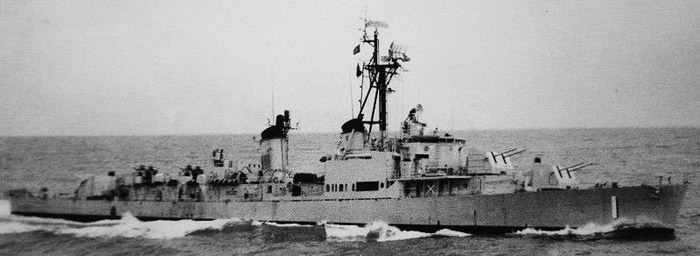
ROCS Hsiang Yang, date unknown (src navsource).
Certainly a great technological leap, Taiwan was granted the more modern (but still WW2 stock) Sumber class destroyers.
The class included the following:
DD876 HENG YANG Bethlehem Feb 1970 Stricken (ex-Samuel N Moore) stricken 1993
DD986 HSIANG YANG Bethlehem, 9.12.69 Suricken (ex-Brush) Staten Island 1984
DD988 HUA YANG Bethlehem, San 9.12.69 Stncken (ex-Bristol) Pedro 1993
DD972 HUEI YANG Federal, Kearny 11.8.70 Extant (ex-English) 1995
DD949 LO YANG Bethlehem, 6.5.74 Stricken (ex-Taussig) Staten Island 1994
DD954 NAN YANG Bethlehem, San 6.5.74 Extant (ex-Fohn W Francisco 1995 Thomason)
DD928 PO YANG Bath Iron Wks 67.72 Stricken (ex-Maddox) 1985
DD944 YUEN YANG Federal, 1250 Suicken (ex-Haynsworth) Keamey 1993
These ex-USN Sumner class units had been modified m the 1950s with 76mm guns, ASW TTs, and improved sensors. Lo Yang and Nan Yang were converted to FRAM II configuration in September 1962 and January 1961 respectively, giving improved ASW capability. They had been equipped with Hughes 500 ASW helicopters small enough to use the existing DASH ASW drone helicopter landing pad and hangar. In 1985, they were further modified with 1-76mm OTO Melara replacing “B” turret, and five Hsiung Feng I SSM in a triple arrangement replacing “X” 127mm turret, two being placed on after superstructure, and a quadruple Sea Chaparral SAM launcher right aft. Their hull-mounted sonar in 1995 was a Krupp Adas DSQS-21CZ. Radars were the SPS-58A and SPS-29.
The other six ships were transferred with the weapons and equipment below:
Huey Yang had “B” 5-in turret later replaced by a 76mm OTO Melara and fitted with five Hsiung Feng I SSM and a Sea Chaparral SAM, but retained her after turret as the SAM launcher was mounted atop the aft superstructure. The remaining five ships all received the “Tien Shi” modernisation programme with two triple IAI Gabriel and later Hstung Feng I SSM were mounted, plus Sea Chaparral aft, replacing the 76mm OTO and after 5-in turret. They also retained their Hedgehog Mk 2, had two triple 324mm Mk 32 ASW TT and DCs. Sensors comprised the ECM WLR-1, 4 chaff RL, Radar SPS-10, SPS-6C, Mk 25 and Sonar SQS-29.
 Fu Yang class destroyers (1971)
Fu Yang class destroyers (1971)
ROCS Fu Yang, Han Yang, Dang Yang, Chien Yang, Lao Yang, Liao Yang, Kai Yang, Chao Yang, Shen Yang, Te Yang, Lai Yang, Yun Yang, Chien Yang, Shao Yang, Tsu Yang
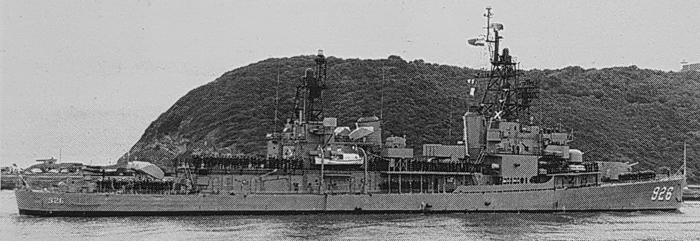
ROCS Suei Yang 04.06.1969 (Coll. Van Ginderen via Conways)
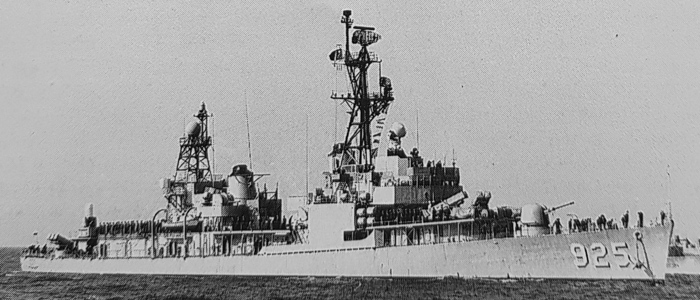
ROCS Te Yang 11.06.1969 (Coll. Van Ginderen via Conways)
ROCS Fa Yong bad been converted as a radar picket in 1952 and with a FRAM II conversion in August 1961. Her SPS-30 radar was removed prior to transfer. On arrival in Taiwan she was fitted with eigt bofors and four cal 0.5 M2HB, and later further with triple Gabriel SSM, and “Y” turret became a 76mm OTO Melara, while Hsung Feng SSM replaces later the Gabriel and Sea Chaparral SAM. The SPS-10 radar was replaced wrth SPS-58 and she had all her updated equipment fitted, extant by 1995, stricken 1999.
ROCS Dang Yang wa completed as a special ASW destroyer and received the FRAM I mod in 1961, then transfemed to Taiwan m 1972. She had a Hughes 100 ASW helicopter using her DASH dome pad and hanger and later received a 76mm OTO Melara, same SSM as her sister. Her electronics suite was also completely modernized.
The remaining twelve ships had been converted to FRAM I. Han Yang however was a NBCW test ship prior transfer.
It’s interestng to note that Chien, Lao and Liao Yang has been first proposed to the Spaniards, which rejected them based on poor condition. They were all extensively modernized. They all operates a Hugue Helicopters and Raytheon DE-1991 sonar. Four had the OTO Melara in B position, five SSMs, two Bofors, two triple ASW TTs. Sui Yang was loke others had ASROC. They also received the Israeli NTICC combat system. (Naval Tactical Command and Control System) as part of the same refit. The remaining seven had thior aft 5-in removed, the 76mm OTO Melara mounted on ‘A’ position.
They are armed with the Standard SM-1 SAM also able to engage surface targets. Two Launchers are mounted forward of the bridge and two more launchers aft with a 20mm Phalanx CIWS between them. Sensors included the rardars SPS-SSA, HSA DAOS 2, HSA STIR-18 missile control system and HW-100 control, sonar. Pennant in were as follow: Chin Yang 912, Han Yang 915, Lao Yang 920, Liao Yang 921, Chao Yang 973, Kai Yang 924, Te Yang 925, Shen Yang 926, Yun Yang 927, Chen Yang 928, Shao Yang 328, Tsu Yang 930. They were discarded between 1999 and 2004. Now the fleet rests on four missiles destroyers, the ex-Kidd.

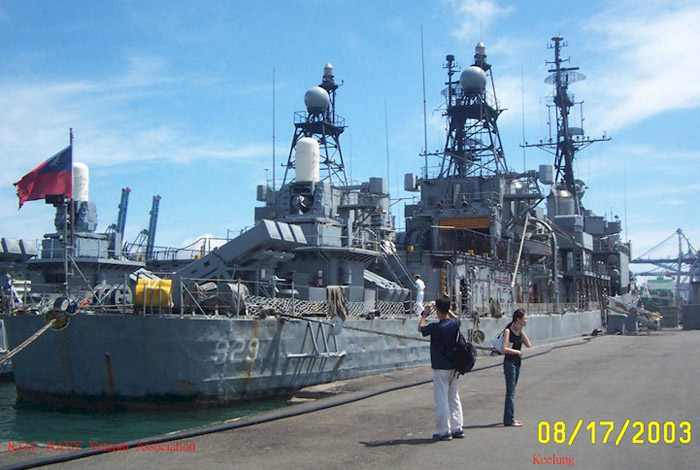
ROCS Shao Yang in 1991 and 2004 (scr navsource)
 Te An class Frigates (1951)
Te An class Frigates (1951)
These were ones of the rare RCN origin vessels: Two Castle class frigates of the BPF, HCMS Pembroke and Edingham castle. They were sold as merchant vessels to China, renamed Orangeville and Tullonsburg, and rearmed, renamed Ta Tsung and Ta Ting, then Hsi Ling and Chui Chin and finally Te An and Kao An. They were rearmed with a 120mm, a 76mm, two twin 40mm, two twin 20mm AA, on 1st June 1951. Oddly, the PRC also rearmed their own two Castle class vessels. They were discarded in 1963 and 1971.
 Tai Kang Chan class Frigates (GMT type 1949)
Tai Kang Chan class Frigates (GMT type 1949)
Thirteen US-built WW2 stocks destroyer escorts were transferred in the 1960s, preceded by two in 1949:
Tai Kang (ex-DE6 Wyffels)1949 (stricken 1975) and Tai Ping (ex-DE47 Decker), sunk 14.11.1954. They were of the GMT (Evarts) type, leased to China, escaping to Taiwan in 1949, having their armament strengthened. On 14.11.1954 Tai Ping was torpedoed and sunk by Communist Motor torpedo boats off Tachen Islands.
 Tai Ho class Frigates (DET type 1949)
Tai Ho class Frigates (DET type 1949)
Next are four DET (Cannon class) escorts, Tai Ho] (ex-Thomas), transferred in 2.1949, stricken 1972, Tai Hu (ex-Breeman), transferred 2.1949, stricken 1975, Tai Tsang (ex-Bostwick) also 2.1949, stricken 1973 and Tai Chao (ex-Carter) also on 2.1949 ans stricken 1973.
Threy were asll armed with the four original 3-in or 76mm/50, seven single 20mm/70 Oerlikon AA, eight DCT; but also they received two 5-in or 127mm/38 Mk 30 and four 40mm/60 Mk 3, and two triple 324mm TT, plus a 24-rocket 178mm Hedgehog Mk 11 ASWRL.
 Hua Chan class Frigates (TE/TEV type 1965)
Hua Chan class Frigates (TE/TEV type 1965)
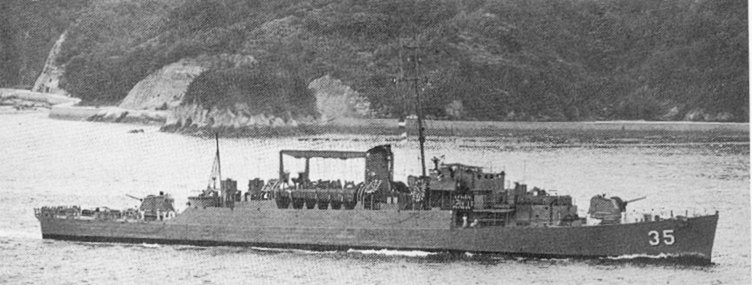
They were the ROCS Tien Shan (ex-Kleinsmith), tr. 5.1960, stricken 1993; Yu Shan, tr. 4.1965, stricken mid-1997; Hua Shan (ex-Donald W. Wolf), tr. 5.1965, stricken 5.1995; Wen Shan, tr. 5.1966 and stricken 1991; Chang Shan (ex-Truxton) or Fu Shan, tr. 3.1966, stricken 1996; Lu Shan tr. 8.1966, stricken 5.1995; Ao Shan (ex-Kline) or Shou Shan, tr. 3.1966, stricken mid-1997; Tai Shan (ex-Register) tr. 10.1966, stricken 1991; Heng Shan (ex-Raymond W. Herndon) tr. 10.1966, stricken 1976; Kang Shan (ex-George W. Ingram) tr. 7.1967, stricken 1978; Chung Shan (ex-Blessman) tr. 7.1967, stricken 5.1995; Lung Shan (ex-Schmitt) tr. in 2.1969 and stricken 1976. There was also the case of the ex-Walter B. Cobb, foundered on 21.4.1966 on her way, before commission and thus unnamed.
They were rearmed with a single 127mm/38 Mk 30 forward, three twin 40mm/60 Mk 1 Bofors and four single 20mm/70 Mk 10, and two triple 324mm TT plus 2 DCR. Others had a 178mm Hedgehog Mk 11 ASWRL.
Tien Shan and Tan Shan were however former AVP conversions, and so they had a deck cargo for 2 LCVP and single 127mm/38 Mk 30 forward.
Obsolete in 1991, they were all converted as offshore patrol vessels (OPV), armed with a single 40mm/60 Mk 1 and discarded in the following years.
 Chi Yuan class Frigates (1992)
Chi Yuan class Frigates (1992)
ROCS Fong Yang, Fen Yang, Lan Yang, Hwai Yang, Ning Yang, Yi Yang
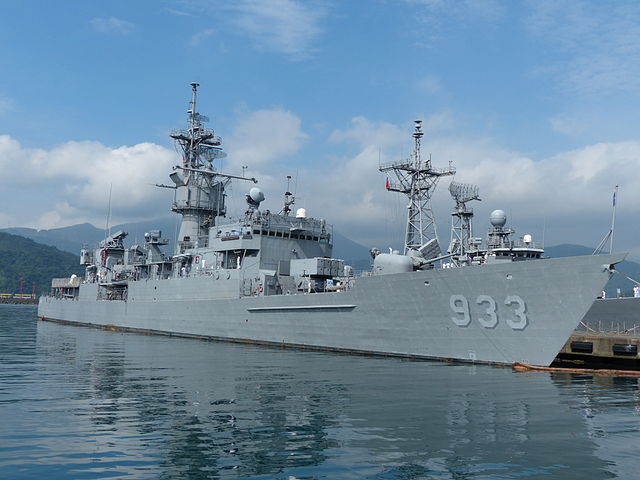
A radical upgrade over WW2 stock DEs, these were at last modern, large ASW Frigates entering the Taiwanese inventory. But they arrived a bit late, post-cold war, to be exact transferred from 1992 onwards in several batches. They were the following:
Chih Yang (ex-Robert E. Peary) transferred in 6.10.1993, stricken 5.2015
Feng Yang (ex-Brewton) in 6.10.1993, in service as of 2022.
Fen Yang (ex-Kirk) transferred 6.10.1993, in service
Lan Yang (ex-Joseph Hewes) transferred 4.8.1995, in service
Hae Yang (ex-Cook) transferred 4.8.1995, stricken in May 2015
Hwai Yang (ex-Barbey) transferred 4.8.1995, in service
Ning Yang (ex-Aylwin) transferred 18.10.1999, in service
Yi Yang (ex-Valdez) trasnferred 18.10.1999, in service
Originally the class was armed with a single Mk-16 8 cell missile launcher for RUR-5 ASROC and Harpoon missiles, single Mk-42 5-inch/54 caliber gun forward, four single tubes Mark 46 torpedoes for ASW warfare and a single Mk-25 BPDMS launcher for Sea Sparrow missiles or Phalanx CIWS depending on their upgrade and a single SH-2 Seasprite (LAMPS I) helicopter aft. The typical electronics suite comprised the SPS-64(v)9, SPS-10F, SPS-40B, SPG-53F, Mk 90 radars, SQS-26CX, SQS-35, SQR-18A sonars, SLQ-32(v)1/2 ECM suite, two Mk 36 SRBOC decoy RL, a single Mk 6 Fanfare torpedo decoy and FFISTS CCS (Central Combat System).
However in Taiwanese service, they were modernized with the following: They received two triple and two twin Standard SM-1MR SSM/SAM (10 RIM-66A), two M2HB and the DA-08/2, STIR-1.8 radars plus the SQR-18A(v)2 sonar and H930 mod.3 CCS. There are modernization programs likely to the 2020s, unless they are retired and replaced.
 Cheng Kung class Frigates (1991)
Cheng Kung class Frigates (1991)

Instead of transferring Oliver Hazard Perry class ships, the government acquiesced for a technology transfer in order that these ships, the largest built in Taiwan to that point, be completed there, with US weapons systems and sensors, but many changed later to Taiwanese systems. The Cheng Kung-class were guided-missile frigates buill by the China Shipbuilding Corporation in Kaohsiung under license, as part of the Kuang Hua I project. They were soon reinforced by the Keelung (Kidd)-class destroyers in 2005. Designated PFG (Patrol Frigate, Guided missile) they are considered the very last iteration of the OHP, now being replaced in the USN by the Constellation class (and decommissioned). Construction rythm is slow. The very last of the class was commissioned in 2004. Two these, two more OHP classn this time ex-US ships were transferred, ROCS Ming-chuan (PFG-1112), ex-USS Taylor on November 8, 2018 as well as Feng Jia (PFG-1115), ex-USS Gary.
Modernization planned are for the addition of the “Taiwanese AEGIS” or Sky Bow air defense system and replacement of the SM-1, Mk 13 launcher.
They will be the object of a dedicated article.
⚙ Cheng Kung class specifications |
|
| Displacement | 4,103 long tons (4,169 t) full load |
| Dimensions | 453 x 46.95ft (138 x 14.31 m) |
| Propulsion | 2 GM LM2500-30 gas turbines 41,000 shp, 2 APU 350 hp |
| Speed | over 29 knots (54 km/h) |
| Armament | Mk 13 SAM (40 RIM-66 Standard MR), 2×3 Mark 32 TTs, OTO Melara 76 mm/62, 2 Bofors, 1 CIWS, 4 Hsiung Feng II, 4 Hsiung Feng III SSM |
| Sensors | Radars AN/SPS-49, AN/SPS-55, Mk 92 FCS, SQS-56 hull-mounted sonar |
| EW, Decoys | SLQ-32(V)2, Mark 36 SRBOC, AN/SLQ-25 Nixie |
| On board aviation | 2 × S-70C(M)-1/2 helicopters |
| Crew | 235 |
 Kang Ding (La Fayette) class Frigates (1993)
Kang Ding (La Fayette) class Frigates (1993)
Kang Ding, Hsi Ning, Kun Ming, Di Hua, Wu Chang, Chen De
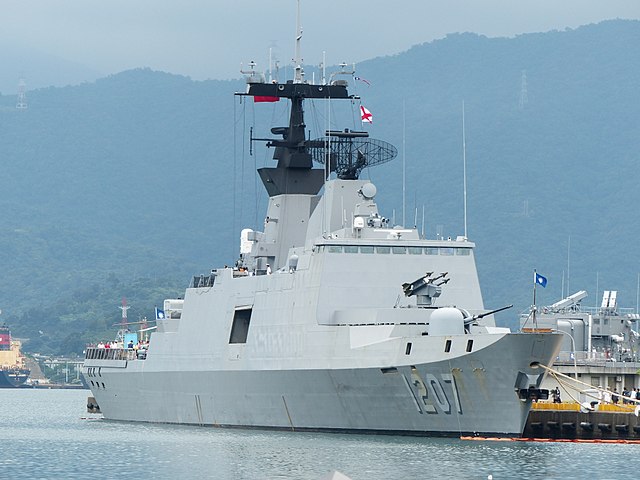
ROCS Wu Chang at Zhongzheng Naval Base
Kwang Hua II Program. A French tailor-made Lafayette class Frigate, and first “sleath frigate” in service with the ROCN. Built not in Taiwan, but in France at DCN (now Naval Group) in Lorient. The attribution process was been marred by a corruption affair and the rest of the 14 planned had been cancelled. The class comprised the Kang Ding launched 12.3.1994, comm. 24.5.1996, Hsi Ning (comm. 12.10.1996, Kun Ming (26.2.1997), Di Hua (8.8.1997), Wu Chang (16.12.1997), Chen De (19.3.1998) so relatively quickly built and in service.
Integrates the same stealthy solutions as for the Lafayette class, with a diesel propulsion mounted in pairs on isolation platforms, superstructure slanted and covered with radar-absorbent GRP-resin compound and built of GRP. There is a thermal reduction system and degaussing equipment, plus an extensive NBC protection. There is special armor, notably kevlar, provided for the magazines and likely CCS. The French SAMAHE helicopter deck proved incompatible with the S-70C(M)1 helicopter and was modified.
In 2021 it was reported an upgrade, started in 2022 for the SAM system followed by a new decoy launching system.
A dedicated article is to be done of these in the future.
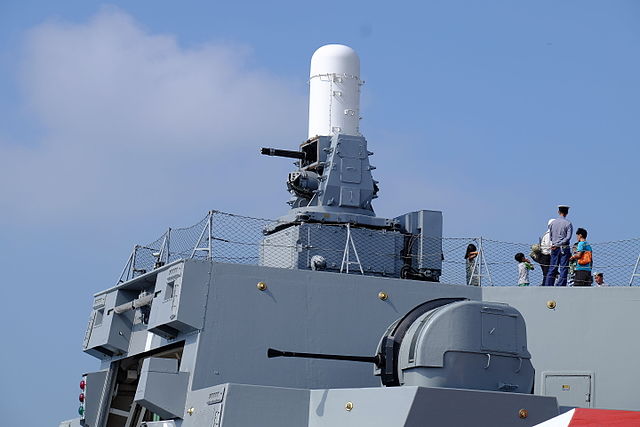
CIWS and Bofors onboard ROCS Du Hua.
Specifications as follows:
⚙ Kung class specifications |
|
| Displacement | 3000 standard, 3800 FL |
| Dimensions | 115.0/124.2m oa x 15.4/13.8m wl, draught 4/5.50m max |
| Propulsion | 2 shafts, 4 SEMT-Pielstick 12 PA 6 V280 STC diesels 21,000 shp |
| Speed | 25 kts, Endurance 7000nm at 15 kts |
| Armament | 2×4 Hsiung Feng II SSM, 1×4 Sea Chaparral SAM, 76mm/62 OTO; 2 Bofors, CIWS, 2×3 324mm Mk 32 TTs |
| Sensors | Racal-Decca 20V90, Jupiter, Triton G, Castor IIC, Mk 90, Najir directors, Spherion B sonar, TAVITAC-2000 CCS |
| EW, Decoys | DR 3000S ECM suite, 2x Dagaie decoy RL |
| On board aviation | 1x S-70C Thunderhawk helicopter |
| Crew | 164 |
ROCN Submarines
 Hai Shih class (GUPPY II) (1973)
Hai Shih class (GUPPY II) (1973)
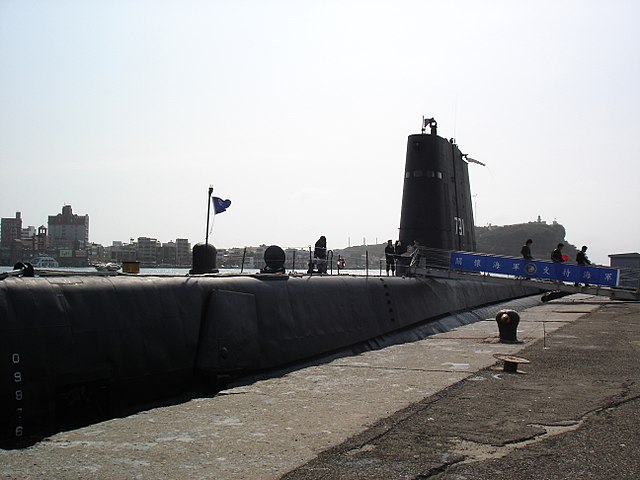
ROCS never receivd any submarine before a 1973 transfer, a bit late for WW2 stock GUPPY converted boats. Hai Shih was the ex USS Cutlass, a Tench class (pennant S91 and in 1983, 791) launched originally in November 1944 and completed in March 1945 and ROCS Hai Pao (ex-Tusk), pennant S92 and 792. The latter was commissioned in 1946.
Both were transferred on 12 april 1973 and 18 October respectively. They were both converted to GUPPY II standard in 1948. (increased battery capacity, streamlined fin, bow, better sonar). See the GUPPY article for more. Before the transfer, to not be accused by the PRC of providing Taiwan two “active” submarines, the US asked for them to be used only for ASW training, shipped woth their TT sealed up. Of course, the ROCN sooon returned them fully operationally, freeing the tubes, and adopting modern Italian torpedoes (of a compatible model with the US tubes), supplied in 1976, so just three years afterwards. Although scheduled to be replaceed by Dutch built submarines, dipolmatic tensions had the order delayed for many years, forcing the ROCN to keep them operational, despite being obsolete.
However, even once the Zzaardvis were built and delivered to the ROCN, the latter maintained the Hai Shih class active, in their original intended role of training submarines. So they were still active in 2019 amazingly, the oldest GUPPY still in service worldwide. Better, they were modernized in 2012 and are still in service today (2022) with the only remaining working Arma gyrocompass, and planned to be retired at last when the IDS programme is complete. In case of an invasion it’s likely they would be pressed in combat too, making them the oldest WW2 relics to ever fight a modern war !
 Hai Lung class submarines (Zwaardvis, 1986)
Hai Lung class submarines (Zwaardvis, 1986)
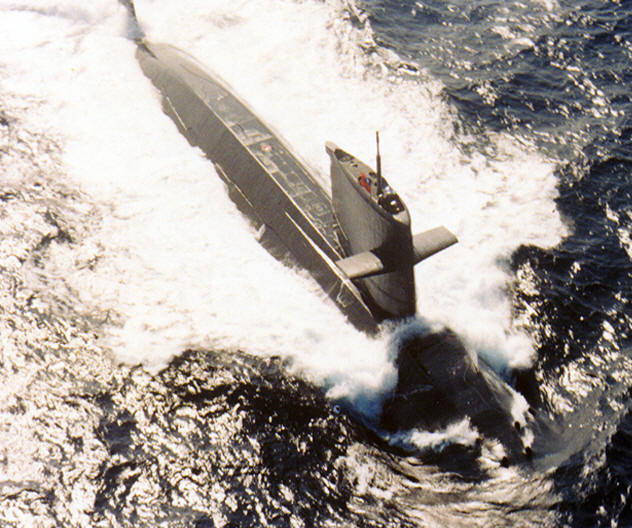
The Chien Lung class, or Hai Lung (Sea Dragon) depending on the source, were built on order of the ROCN in the Netherlands, for the Republic of China as a modified version of the Dutch Zwaardvis class, derived from the late US SSK of the Barbel class. Hai Lung (Sea Dragon) pennant SS-793 was built in Wilton-Fijenoord, laid down on 15 December 1982, launched on 6 October 1986 and completed on 9 October 1987. Hai Hu (Sea Tiger) pennant SS-794 from the same yard, was laid down in December 1982, launched on 10 December 1986 and completed on 9 April 1988. Construction had been delayed for many years first ordered in 1980 with vivid protests from mainland China, ultimately greenlighted after many tractations in 1983. These were the first new major warships built for Taiwan since 1949, but completion was delayed by financial difficulties. However it was considered more advanced even than the Zwaardvis class, highly automated, silent and modern. Later, further two were ordered, and two more in option, turned down by the Netherlands government in 1984, due again to intense Chinese pressure.
Later the Taiwanese asked for a transfer of technology for these to be built in Taiwan, following the power station components and gas liquifaction plants already delivered, but again this was denied. From this, and given the refusal of either France, Germany, Japan or the US to provide some, was the main incentive behind the IDS: They are to be replaced, as the Hai Shih class, by the new Indigenous Defense Submarine (ISD) program in the 2020s. However in 2013 both received the ability to launch Sub Harpoon missiles as well as Mk 48 Mod.3/4 torpedoes and to 4 UGM-84 Sub-Harpoon Block I or II, the US remaining evasive about their origin.
This class will be the object of a standalone post.
Quick specs: 2375/2660 tonnes, 66.9 x 8.40 x 6.70m, 1 shaft, 3 Brons-Werkspoor ORUB 215-12V diesel-generators, 1 Holec electric motor 1400/5100 hp, 11/20 kts, 310 tons diesel oil, 10,000nm at 9 kts, six 533mm TT (20 SUT and Mk 37 torpedoes), Sonar Elodone Octopus with SIASS Z sonar suite, Type 20026 towed array, DUUX-5 Elbit TIMNEX 4CH(V2) electronic support measures (ESM) system, ZW-06 radar, Argo AR-700 ECM, Gipsy Central Combat System. Crew 67, can dive at 240m.
Amphibious assault ships
 Chung Cheng class LS (1960)
Chung Cheng class LS (1960)
(To come in a future update)
 Chang Hai class LST (1946)
Chang Hai class LST (1946)
(To come in a future update)
 Mai Chin class LS (1946)
Mai Chin class LS (1946)
(To come in a future update)
 Men Chien class LSIL/LSSL (1954)
Men Chien class LSIL/LSSL (1954)
(To come in a future update)
 Ho Chung class LCT(6) (1958)
Ho Chung class LCT(6) (1958)
(To come in a future update)
 Ho Shan class LCU 1466 (1955)
Ho Shan class LCU 1466 (1955)
(To come in a future update)
 Minor Landing Crafts
Minor Landing Crafts
(To come in a future update)
Small Surface Combatants
(To come in a future update)
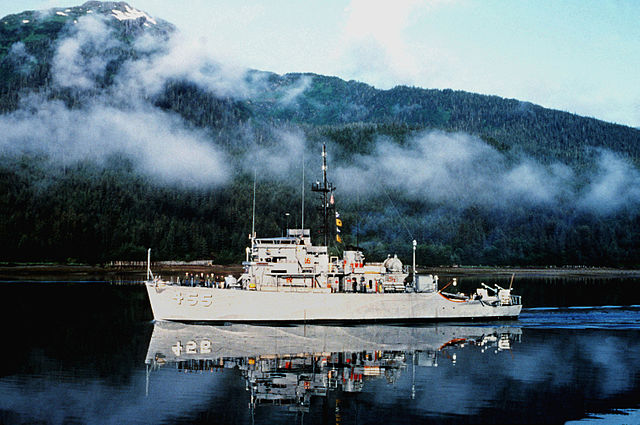

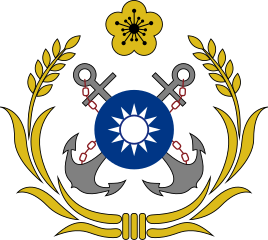

 Latest Facebook Entry -
Latest Facebook Entry -  X(Tweeter) Naval Encyclopedia's deck archive
X(Tweeter) Naval Encyclopedia's deck archive Instagram (@navalencyc)
Instagram (@navalencyc)





 Austrian Navy
Austrian Navy French Navy
French Navy Royal Navy
Royal Navy Armada Espanola
Armada Espanola K.u.K. Kriegsmarine
K.u.K. Kriegsmarine Dansk Marine
Dansk Marine Nautiko Hellenon
Nautiko Hellenon Koninklije Marine 1870
Koninklije Marine 1870 Marinha do Brasil
Marinha do Brasil Osmanlı Donanması
Osmanlı Donanması Marina Do Peru
Marina Do Peru Marinha do Portugal
Marinha do Portugal Regia Marina 1870
Regia Marina 1870 Nihhon Kaigun 1870
Nihhon Kaigun 1870 Preußische Marine 1870
Preußische Marine 1870 Russkiy Flot 1870
Russkiy Flot 1870 Svenska marinen
Svenska marinen Søværnet
Søværnet Union Navy
Union Navy Confederate Navy
Confederate Navy Armada de Argentina
Armada de Argentina Imperial Chinese Navy
Imperial Chinese Navy Marinha do Portugal
Marinha do Portugal Mexico
Mexico Kaiserliche Marine
Kaiserliche Marine 1898 US Navy
1898 US Navy Russkiy Flot
Russkiy Flot French Naval Aviation
French Naval Aviation Russian Naval Aviation
Russian Naval Aviation Sovietskiy Flot
Sovietskiy Flot Royal Canadian Navy
Royal Canadian Navy Royal Australian Navy
Royal Australian Navy RNZN Fleet
RNZN Fleet Chinese Navy 1937
Chinese Navy 1937 Kriegsmarine
Kriegsmarine Chilean Navy
Chilean Navy Danish Navy
Danish Navy Finnish Navy
Finnish Navy Hellenic Navy
Hellenic Navy Polish Navy
Polish Navy Romanian Navy
Romanian Navy Turkish Navy
Turkish Navy Royal Yugoslav Navy
Royal Yugoslav Navy Royal Thai Navy
Royal Thai Navy Minor Navies
Minor Navies Albania
Albania Austria
Austria Belgium
Belgium Columbia
Columbia Costa Rica
Costa Rica Cuba
Cuba Czechoslovakia
Czechoslovakia Dominican Republic
Dominican Republic Haiti
Haiti Hungary
Hungary Honduras
Honduras Estonia
Estonia Iceland
Iceland Eire
Eire Equador
Equador Iran
Iran Iraq
Iraq Latvia
Latvia Liberia
Liberia Lithuania
Lithuania Mandchukuo
Mandchukuo Morocco
Morocco Nicaragua
Nicaragua Persia
Persia San Salvador
San Salvador Sarawak
Sarawak Uruguay
Uruguay Venezuela
Venezuela Zanzibar
Zanzibar Warsaw Pact Navies
Warsaw Pact Navies Bulgaria
Bulgaria Hungary
Hungary

 Bundesmarine
Bundesmarine Dutch Navy
Dutch Navy Hellenic Navy
Hellenic Navy Marina Militare
Marina Militare Taiwanese Navy
Taiwanese Navy Chinese Navy
Chinese Navy Indian Navy
Indian Navy Indonesian Navy
Indonesian Navy JMSDF
JMSDF North Korean Navy
North Korean Navy Philippines Navy
Philippines Navy ROKN
ROKN IDF Navy
IDF Navy Royal New Zealand Navy
Royal New Zealand Navy Egyptian Navy
Egyptian Navy South African Navy
South African Navy

































 RN
RN
 Marine Nationale
Marine Nationale
 Soviet Navy
Soviet Navy
 dbodesign
dbodesign